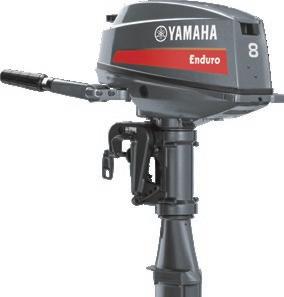
A R I B B E A N




A R I B B E A N


— SEE PAGE 10

Max Gallo and Amanda Delaney
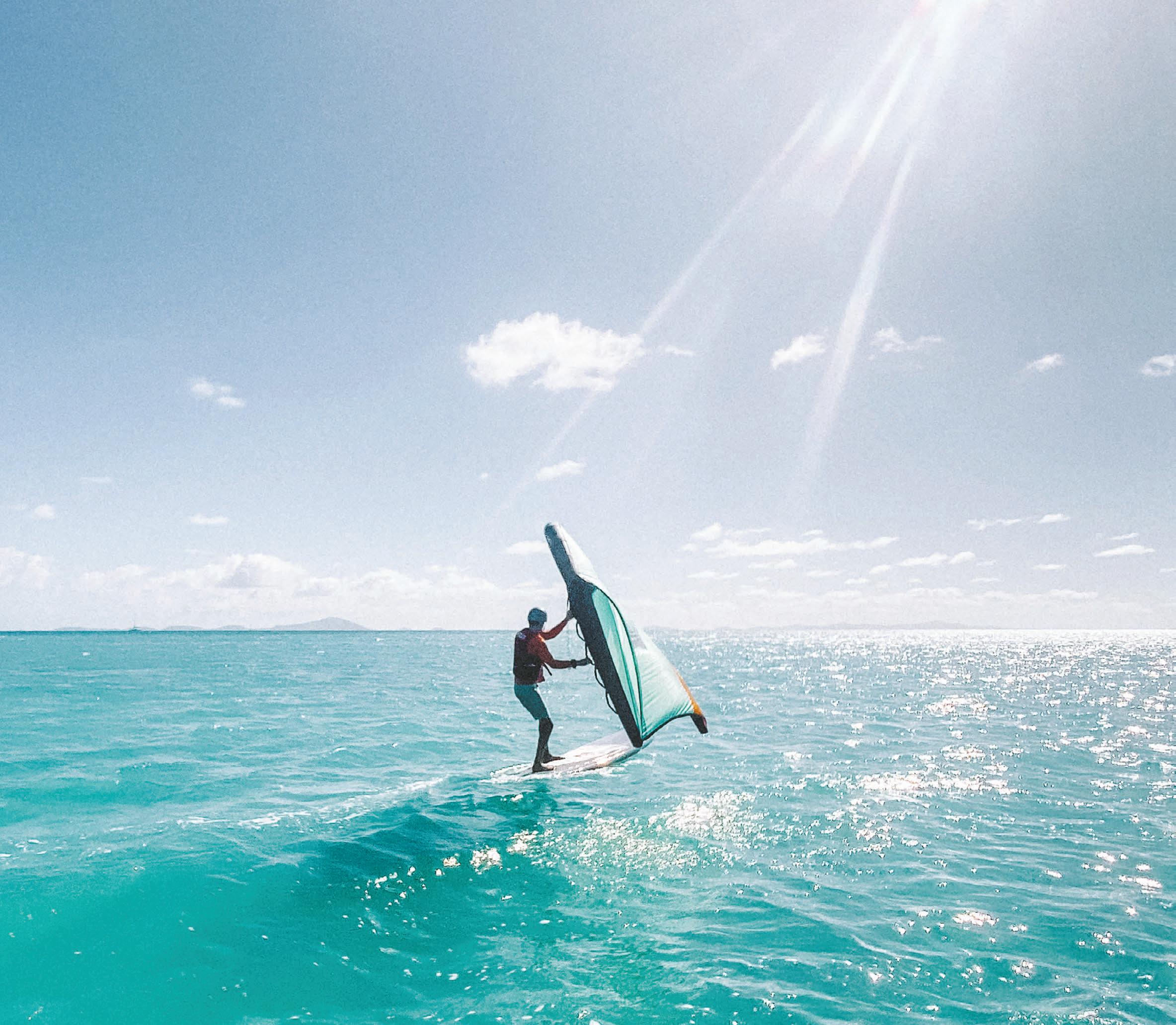
H. Lyman
Michelle Slade
Snyman
Wingfoiling combines elements of windsurfing, kitesurfing, and hydro foiling. It’s one of the fastest growing water sports, appealing to all ages and sizes anywhere a body of water and a decent breeze exist. See story on page 17.
Publisher | Dan Merton dan@caribbeancompass.com
Advertising & Administration Shellese Craigg shellese@caribbeancompass.com
Publisher Emeritus | Tom Hopman
Editor Emeritus | Sally Erdle

Editor | Elaine Lembo elaine@caribbeancompass.com
Executive Editor | Tad Richards tad@caribbeancompass.com
Art, Design & Production Berry Creative abby@berrycreativellc.com

Antigua Groups Laud Whaling Moratorium Victory
Dear Compass,
On Friday, September 27, local environmental groups congratulated the government of Antigua & Barbuda for withdrawal of the “Resolution for the Implementation of a Conservation and Management Program for Whale Stocks Aimed Toward the Lifting of the Moratorium and Orderly Development of the Whaling Industry” at the IWC International Whaling Commission (IWC) biennial meeting in Lima, Peru September 22-27, 2024.
Groups had joined forces and sent a letter to the Honourable Prime Minister Gaston Browne, copied to the Honourable Minister of Tourism Charles Max Fernandez, requesting that Antigua and Barbuda withdraw a resolution presented to the International Whaling Commission, and reverse the prowhaling position of the country within the IWC.
On the afternoon of September 26, the resolution was withdrawn by Antigua and Barbuda Whaling Commissioner Daven Joseph. “Antigua & Barbuda and a number of interested governments and NGOs met and we were not able to move the resolution forward. The intention of Antigua and Barbuda is to withdraw the resolution at this time,” said Joseph. Environmental groups were concerned over the ramifications of the resolution, including the reintroduction of commercial whaling.
Whales are essential for the health and productivity of the marine ecosystem, playing a vital role in nutrient cycling and supporting a rich diversity of marine life. Their feeding habits stimulate phytoplankton growth, the foundation of the marine food web, ensuring health and productivity in marine ecosystems.
“It is heartwarming to see something positive happen regarding the protection of the marine environment,” says Martha Watkins Gilkes of the Antigua & Barbuda Independent Tourism Promotion Corp., who spearheaded the protest. “Anything that can be done to protect the marine environment is a win-win. It has been awesome to see how many Antiguans have taken a stand against the pro-whaling stand.”
“The environmental crises have deepened with alarming issues like global
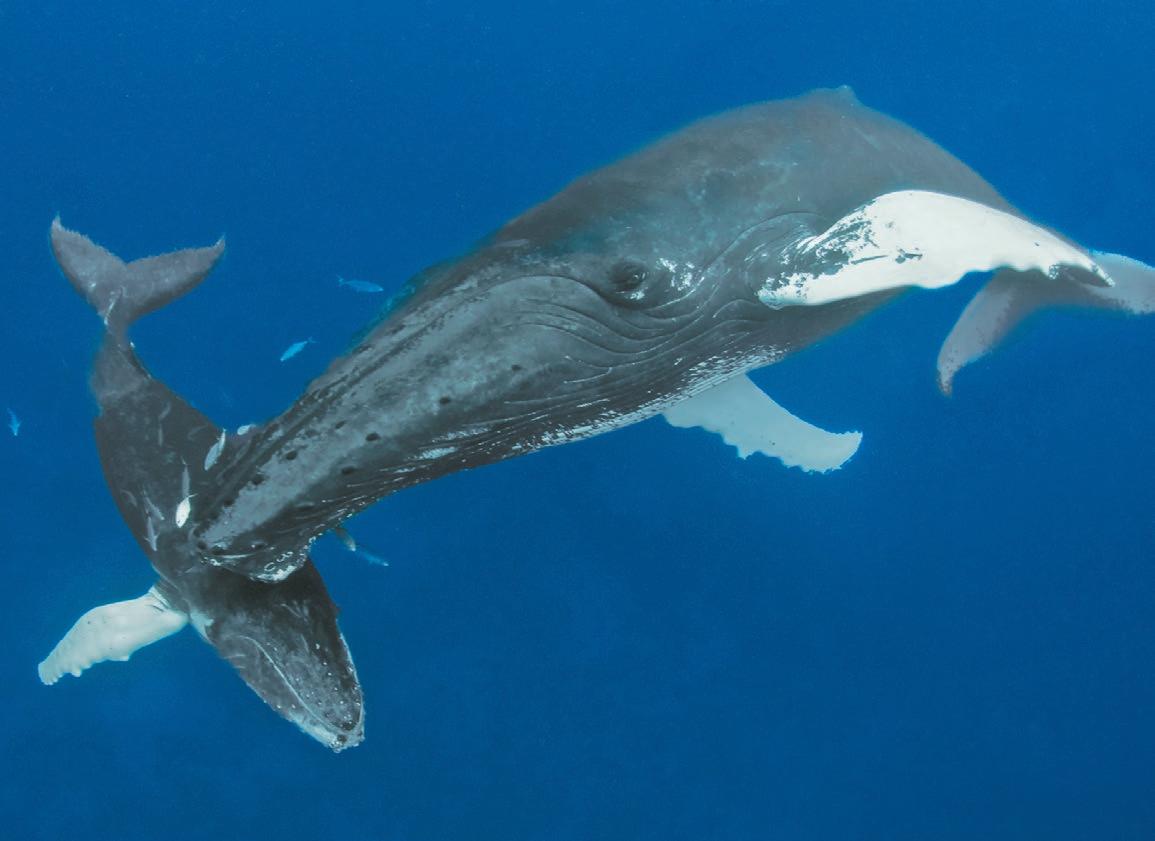
warming, ocean pollution, unrelenting heat, coral reefs dying, depletion of fish stocks, species loss — environmental issues go on and on,” Gilkes says.
“It is irresponsible to take any action that adds to this crisis and removal of whales from the marine environment does so.
“The marine environment is in such crisis with so many issues that any additional stress should be avoided. It is the responsibility for all nations and populations to play their part in this.”
Editor’s note: Read more at https://caribbeancompass.com/antigua-groupslaud-whaling-moratorium-victory



By Tad Richards
Notable in November will be a variety of events happening in two of our larger islands, one a US territory, the other with a touchy but not (these days) unwelcoming relationship with the large country to the north. To our British, European and Asian cruisers, they’re just two islands that may or may not be worth a visit, depending on your tastes and inclinations.
Puerto Rico has the big music arenas that book popular acts. The Coca-Cola Music Hall will present Brenda K. Starr the one-time R&B singer and Harry Belafonte protégé who, heeding the influence of her Puerto Rican mother, has reinvented herself as a salsa singer. Her “Herida” hit Number One on the Latin Tropical/Salsa Airplay chart, and the recent “Tu Eres” was nominated for a Billboard Latin Music Award. She appears November 15, and on November 17, the same venue will present David Bisbal, the Spanish-born singer who’s become an international favorite in Europe and Latin America. But there’s more variety than that in San Juan from November 4-10, as the Puerto Rico Queer Filmfest, a tradition since 2009, presents LGBTQ+ films in venues all over town (puertoricoqueerfilmfest.com).
Even more variety will be on display in Cuba, starting with the Habana Clasica Music Festival, November 5-20, which celebrates the life and works of 18th Century Cuban composer Esteban Salas, in churches,
chapels, theatres, and cultural centers. Overlapping those dates, the Havana Biennial opens November 15 and runs through February 28, 2025, with a theme of “Shared Horizons,” highlighting cultural commonalities rather than differences, and featuring exhibitions, installations, and performances in traditional art spaces and alternative venues throughout the city. And if all that culture makes you want to just get out and run with the wind, the Marabana Marathon November 19, attracts top international athletes and folks who just want to run, at a range of distances. Find out more about all of these at cubagrouptour.com/us/information/ events-in-cuba.
There’s never any shortage of food and drink festivals in the Caribbean, ranging from upscale to down home. Our month starts off with a decidedly Gallic flavor, as eight French chefs visit the island for the St. Barths Gourmet Festival (November 5-10, saintbarthgourmetfestival.com) to partner with local restaurants in creating multi-course tasting menus — directly followed by the St. Barths Rum Festival (November 11-17, caribbeanrumawards.com), your chance to taste some of the region’s finest artisanal rums and meet the distillers who created them. And still more French chefs will visit St. Martin, to join with talented local chefs for the Festival de la Gastronomie (November 11-22, festival-st-martin.com/en).
A two-time winner of the World Culinary Awards “Caribbean’s Best Culinary Festival Award,” the Jamaica Food and Drink Festival (November 7-10, jafoodanddrink.com) brings nearly 60 chefs, wine and spirit mavens together at seven locations across Kingston.
And the culinary month ends on a high note with a celebration of one of my favorite foods at the Anegada Lobster Festival on the island of Anegada, BVI (November 30-December 1, bvicalendar.com). Once you’ve said “lobster,” nothing more needs said.
Moving on from gastronomic delights, we find … Aaaaaaargh! It’s Pirate Week in Grand Cayman (November 8-17, Piratesfestcayman.com), a celebration of all things swashbuckle, combining cosplay with local cultural history.
The BVI Literary Arts Festival (November 7-10, bvilitfest.com) will be a touch more articulate than Aaaaargh!, with an intriguing lineup of Caribbean writers headed by National Book Critics Circle Award winner Safiya Sinclair. The Alliouagana Festival of the Word, in Montserrat, traditionally one of the region’s best-loved literary festivals, also takes place in late November, but they haven’t announced any dates yet.

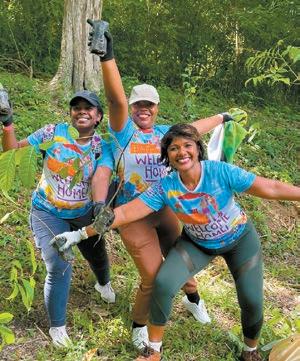
Caribbean Airlines staff members have planted close to 500 seedlings in Courland, Tobago, as part of an ongoing reforestation programme in partnership with the Eco Titans community, the Tobago Reforestation Watershed and Rehabilitation Programme (TRWRP), and the Tobago Tourism Agency. They planted almond, hog plum, fat pork, cedar, yellow poui, chennette, and tamarind seedlings. This is the second year of Caribbean Airlines’ participation.
Visit cs.caribbean-airlines.com for more information on sustainability initiatives at Caribbean Airlines.
The Caribbean Multihull Challenge returns to St. Maarten in 2025 with a full schedule of multihull racing, plus the Boardwalk Jamboree, a festive gathering celebrating local music and culture.
The regatta features a full schedule of multihull racing, which will give sailing enthusiasts great views all weekend long. Rally participants can also test their limits in time trials, adding an extra layer of competition for rally fans. With a variety of activities, this year's event promises something for everyone, from casual spectators to seasoned rally participants.
Brand new is on the 30th of January — the first day of the CMC Rally — entered boats will sail into Great Bay to experience a full day of activities in Philipsburg — the capital of Dutch Sint Maarten.
Activities begin at noon with the Diam Open Trimaran Sportboats racing grand-prix style along the beach close to the Boardwalk with its many bars and restaurants. In the afternoon, activity will move to the new beach sports park. Evening parties will culminate in a spectacular fireworks show.
CMC VII will see the second year of the innovative Time Trials for Cruising Multi-hulls™ where skippers in the rally have a chance — in an environment safe from collisions — to compete in point-to-point speed sailing from one destination to another.
Racing will see a repeat of the FKG Trifecta™ consisting of a big boat 60-mile Sprint around St. Barth’s, a 52-mile Dash to Saba and back, and a 27-mile around SXM Circle Race. These three races plus two more will make up a full five-race schedule for CSA 1 boats; all other classes will see a variety of racing supervised by returning race officer Chris Mansfield from Antigua.
Grenada Marine Turns 25
Grenada Marine reaches its 25th year of operation in 2024. “We are older and wiser, but we still love boats,” says general manager Jason Fletcher. Staff plan to celebrate the anniversary with celebrations and incentives for customers.
Grenada Marine Boatyard is at St. David's Bay, Corinth, St. David's, Grenada.

Spice Island Marine Services in Grenada's Prickly Bay is the official supplier for the Viking Explorers Rally. As part of this collaboration, Spice Island will offer essential support including vessel maintenance, fueling services, and local expertise. The partnership will feature promotional activities in Grenada as well as local support and collaboration with the rally team.
Following the successful launch of the Awlgrip® 3D Color Visualizer, AkzoNobel has added two more digital capabilities to its technical service: RealWear, a camera headset, and Virtual Reality (VR) Spray Gun technology. Both are compatible with the Awlgrip, Interlux®, International® and Sea Hawk® brands.
The RealWear camera headset is a safe and hands-free visual assistant tool that connects applicators directly to the AkzoNobel team for real-time technical support. Users wearing the RealWear glasses can stream video and take pictures, allowing the AkzoNobel technical team to observe issues and offer support in real time from anywhere in the world. The software can be used via mobile and is compatible with both Apple and Google operating systems. RealWear is available in late 2024.
The VR Spray Gun Equipment is portable, hands-free and safe, allowing the AkzoNobel technical teams to transport it anywhere to help train distributor representatives, boatyard applicators. It is also a training tool at AkzoNobel’s Yacht Painting Application Centers around the world. For more information visit awlgrip.com
The Caribbean Sailing Association with Budget Marine have launched the Budget Marine Windies Multihull Trophy, a new championship designed to encourage offshore multihulls to participate in Caribbean regattas and offshore passage events for the 2025 sailing season.
The Windies Multihull Trophy will include some of the most prestigious events in the Caribbean regatta circuit, such as Barbados Sailing Week, the Rum to Spice Race, Grenada Sailing Week, the Caribbean Multihull Challenge, the Antigua 360°, the RORC Caribbean 600, the St. Maarten Heineken Regatta, the BVI Round Tortola Race, the BVI Spring Regatta, and Antigua Sailing Week.
The championship will consist of two divisions: multihulls with a length overall (LOA) of less than 60 feet, and those with an LOA of 60 feet and above. All multihulls that have made passages between the events under their own power or sail are eligible and will be automatically entered. Multihulls can count their best five scores.
For updates, check either of these:
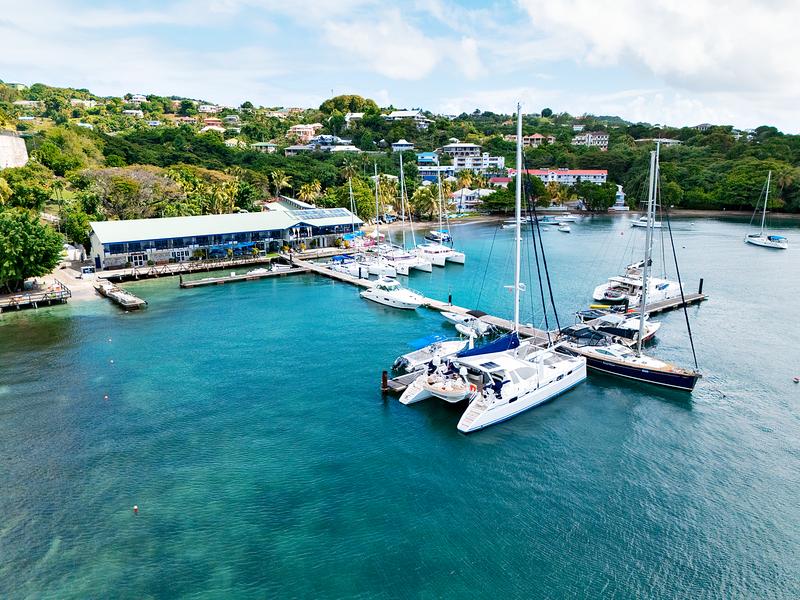
https://www.facebook.com/profile.php?id=61565490675616

https://caribbean-sailing.com/introducing-the-budget


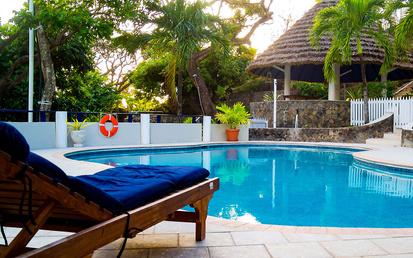
By Max Gallo and Amanda Delaney
The 2024 North Atlantic hurricane season got off to a quick jump in late June with the formation of Alberto, Beryl, and Chris. Meteorologists across the field were in strong agreement that this season would be above average and quite active. Hurricane Beryl shattered records for its strength and early season development. This activity came to a quick halt following Beryl’s dissipation in early July. During July, meteorologists were fascinated by the lack of activity across the basin, with errant tropical waves even becoming hard to find. There are several factors that we are certain have inhibited development during the period.
the strongest in approximately two years and is likely a significant factor in why the tropical cyclone activity diminished drastically during that time. However, the plumes of dust diminished toward the end of July, which helped allow Hurricane Debby and Hurricane Ernesto to form in the Tropical Atlantic.
The Intertropical Convergence Zone (ITCZ) is basically where southeasterly and northeasterly trade winds meet, which forces air to rise, a main ingredient in the genesis of thunderstorms. The ITCZ fluctuates seasonally near the equator early in the year and shifts to the north around June. However, this year the ITCZ was farther south than its mean location during June and was slow to migrate north until closer to the end of July and August this year.
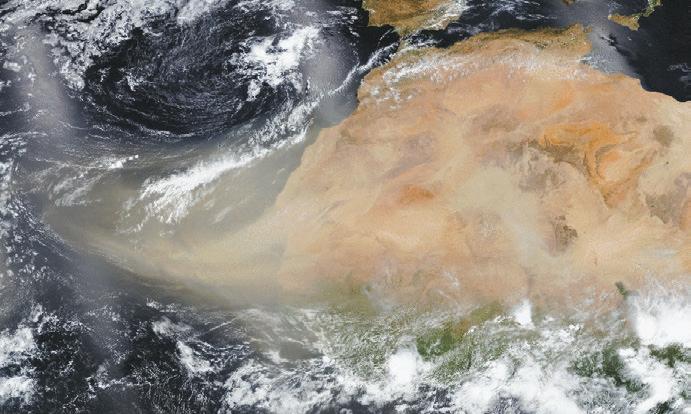
Satellite imagery near the end of June through July showed large plumes of dust blowing off the Sahara Desert and over the region where tropical cyclone development usually occurs off the African coast. The dust is transported by westward moving thunderstorms that track through Western Africa and offshore the coast. This dust is pushed over the Atlantic basin, and if it is strong enough, can reach as far the Gulf of Mexico. The dust suppresses moisture across the Atlantic Basin which is a key ingredient for tropical cyclone development. While it is typical to have Sahara Dust during this time of year, this particular year the surge in Sahara Dust was
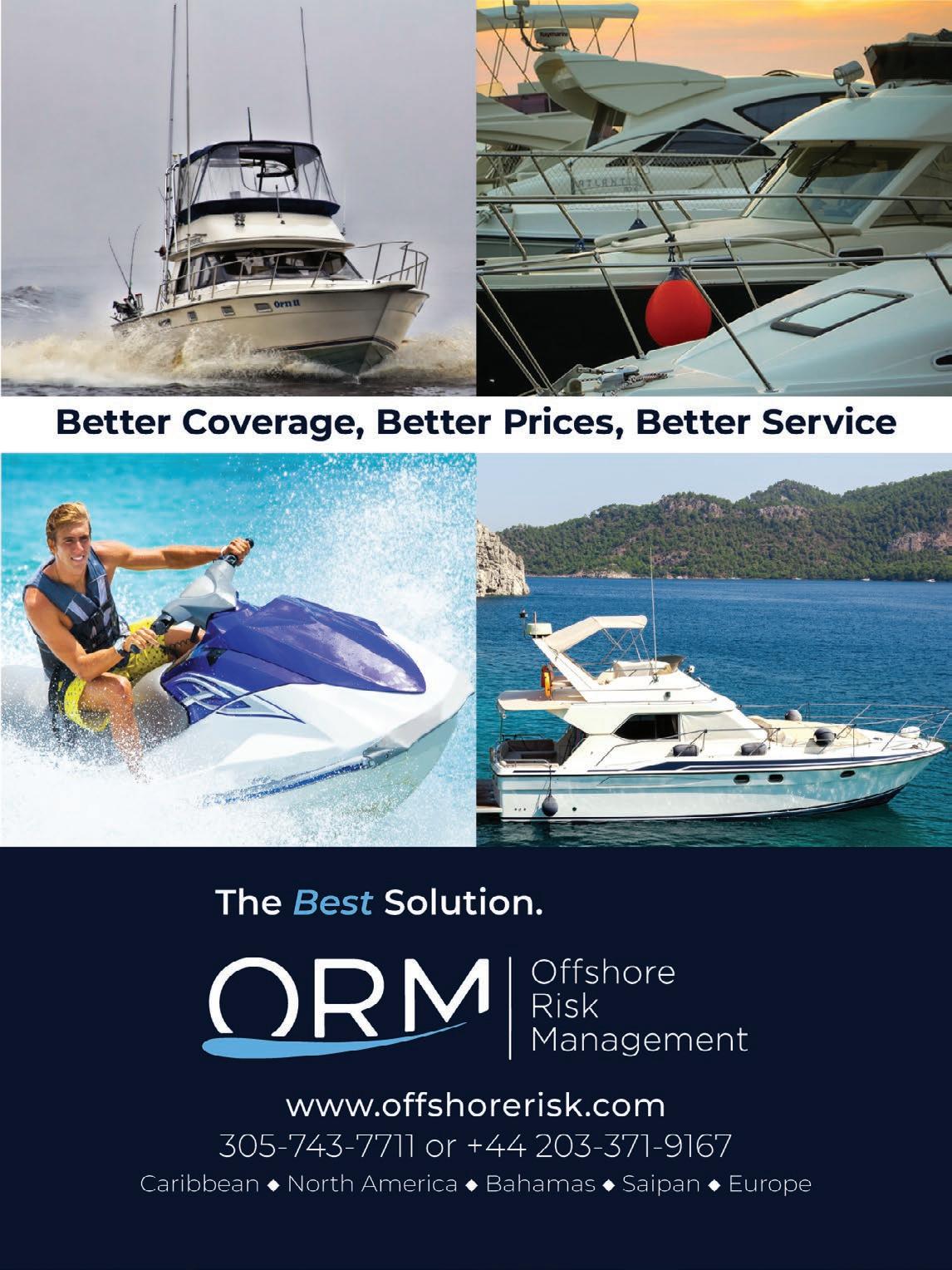
One last factor, or rather an absent ingredient, is the Madden-Julian Oscillation (MJO). This is an alternating oscillation of pockets of moist and dry air that travel eastward across the globe along the equator. One typical rotation around the globe takes anywhere between 30 and 60 days. When a dry portion of the MJO is over the Atlantic hurricane basin, an already unfavorable environment becomes even less likely for tropical development. Just like the aforementioned factors, this pocket of dryer air over the region will only last for so long.
Since the end of July though we have had five tropical cyclones that have developed, and it appears the Atlantic basin is making up for lost time. The Sahara dust has disappeared, the ITCZ has shifted back north to where it’s supposed to be, and the Madden Julian Oscillation has drawn moist air back over the Eastern Atlantic Ocean. Therefore we expect that the rest of the Atlantic Tropical Cyclone Season will remain more active than normal until the end of November.
Max Gallo and Amanda Delaney are staff meteorologists at Weather Routing Inc. (https://www.wriwx.com). WRI provides customized forecasts and online weather services to mariners worldwide.

















A record-breaking thirteen restaurants will showcase lobster samplers and meals over the weekend of November 30-December 1, when the British Virgin Islands celebrates the 12th annual Anegada Lobster Festival. New this year is a competition for the best lobster sampler, which will be judged by Executive Chef Shane Huggins, who is Chef Ambassador for Saint Martin’s Gastronomy Festival 2024. Another new feature is the sampler voucher which will be given out to approximately 600 lucky patrons, allowing them to get free samples from participating restaurants.
Restaurants that confirmed participation are Flamingo Pride, Lil Bit, KG’s Café, Anegada Reef Hotel, Big Bamboo, Cow Wreck, Flash of Beauty, Lobster Trap, Wonky Dog, Pink Flamingo, Potter’s by the Sea, Sid’s at Pomato Point and Tipsy.
Culinary and Mixology competitions will take center stage at the 2024 USVI Charter Yacht Show, set for November 8-11 at IGY’s Yacht Haven Grande, hosted by celebrity chef and Olympic Boxer Julius Jackson.
Charter chefs can enter any two courses in the competition, choosing from appetizer, entrée, or dessert. Judging is based on execution, appearance, taste, creativity, and color. Also on display will be more than 65 power and sail, multihulls and monohulls, from 40-to 130-plus feet.

On Sunday, November 3, from 1-4 p.m., the St. Thomas Yacht Club’s (STYC) St. Thomas Sailing Center (STSC) will offer free half-hour sailboat rides, with refreshments afterward, for its fall open house. An experienced skipper will guide newbies on a 24-foot IC-24 or a 13-foot two-person Hobie Wave catamaran. STSC is also offering discounts and information on its many sailing courses and boat access program.
The STSC Mid-Winter Clinic & Regatta in Paradise will offer individual coaching on all points of sail, mixing classroom instruction with video analysis, debriefs and short lectures, combined with on-thewater drills, and short-distance practice races. The clinic wraps up with participants testing their new skills on two regatta days, one for buoy and short-distance racing and the second for a time-honored regatta in paradise. The STSC uses its onedesign fleet of IC-24s, a modified J/24 with a large, open cockpit, mainsail, jib and symmetrical spinnaker.
Sailors individually as well as together as teams of four can register for the Mid-Winter Clinic & Regatta in Paradise by calling Cell/ WhatsApp (340) 690-3681 or visiting stthomassailingcenter.com/sailing-clinics/midwinter-clinic-regatta. Skippers needing crew and individuals interested in crewing can contact STSC for help assembling teams. Participation is limited to 10 teams or 40 participants on a first-come, first-serve basis. Individual registration fee is $1,800 and team registration is $6700.

For more information, visit stthomassailingcenter.com
St. Vincent and the Grenadines moves to Digitize Maritime Sector
St. Vincent and the Grenadines is advancing plans to establish a Maritime Single Window (MSW) to digitize its maritime sector. An MSW is a centralized IT platform that facilitates the exchange of information among ships and various government agencies for the efficient arrival, stay, and departure of ships at ports.
As of 1 January, 2024, all IMO member states are required to implement MSW systems to streamline port procedures and enhance efficiency. St. Vincent and the Grenadines, along with four other Eastern Caribbean states — St. Lucia, Dominica, Grenada, and St. Kitts and Nevis—are setting up MSWs with support from the IMO, the Organization of Eastern Caribbean States (OECS) Commission, and the Government of Antigua and Barbuda.
The MSW systems of all OECS member states will be connected to the regional repository of the Caribbean Community Implementation Agency on Crime and Security-Joint Region Communication Centre (CARICOM IMPACS-JRCC).

The Viking Explorers Rally has renewed its sponsorship agreement with the Grenada Tourism Authority and Port Louis Marina for another five years.
Each year, an exclusive group of 25 boats from around the world visit the Canary Islands, Cape Verde and Grenada. The upcoming eighth edition will begin December 8, 2024 in Las Palmas de Gran Canaria and finish around the eighth of February 2025 in Grenada. Pre-registration for the next rally is open and participants are encouraged to secure their spots early.
For more information about The Viking Explorers Rally, please visit: www. vikingexplorersrally.com

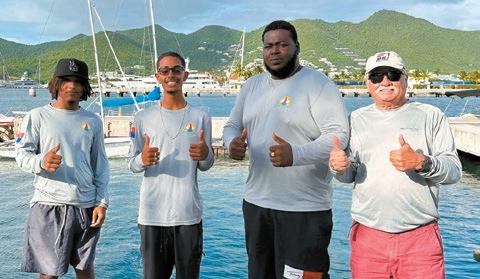
Three students — Jahsentio Dore, Claude Peterson, and Keane Spencer — have completed their three-month marine training program and graduated with essential maritime certifications, positioning them to launch careers within Sint Maarten's marine industry. Their studies were made possible through the support of a Resources for Community Resilience (R4CR) grant.
The graduates received the STCW diploma, the International Yacht Training (IYT) Dinghy Sailing Diploma, a 15-Meter Powerboat Certification, and the VHF Radio Operator Certificate. The program is a joint effort of the Sint
and Kidz At Sea.
Story and photos by David H. Lyman
If you are reading this magazine, you are most likely already in the Caribbean, on a boat, or dreaming about a boat that can take you to those islands. These may be two different boats.
There’s a lot to consider, so let’s get started.
Has anyone come close to designing the ideal Caribbean cruising yacht, let alone building one? I’ve sailed a dozen different boats to and through the islands, and while each had its charms, each also came with things I could just as soon do without. So, no, there may not be one boat that fits everyone’s ideal.
What may appear to appeal to me may fall far short for another sailor. This boat thing is an ever-elusive search for the ideal. The problem is that as we outgrow one boat, we then have to search for the next boat that fits our new perspective on this life afloat.
British boat designer Hubert Scott-Paine once said, “A man should own a boat that is equal in feet to his age.” It became a favorite quote of Ted Turner’s, to the point that it is often attributed to him. All I can say is, it worked for me. My first boat was an Alden 34-foot wooden sloop that I bought when I was 29, for $6,000. My fourth and last boat, Searcher, was a 57-foot Bowman ketch I bought when I was 56 for $200,000. She was already 20 years old, but over the 14 years I sailed her, I still consider that Bowman to be the one that fit all my needs. Great offshore boat, but a bit cramped for family living aboard, full time. Searcher was also a lot of boat, expensive to insure, maintain, and continually upgrade. Owning her became a full-time job. Today, I would just as soon go back to a 34-footer with just the basics, but now also with solar, an automatic pilot, AIS, GPS and Navionics on my iPhone.
The Compromise
My son, Havana, a young yacht designer fresh out of college, and I were driving back to Maine after four days at the Newport boat show. We have some good conversations. If you ask him, he’ll tell you he knows more than I do.
—Continued on next page
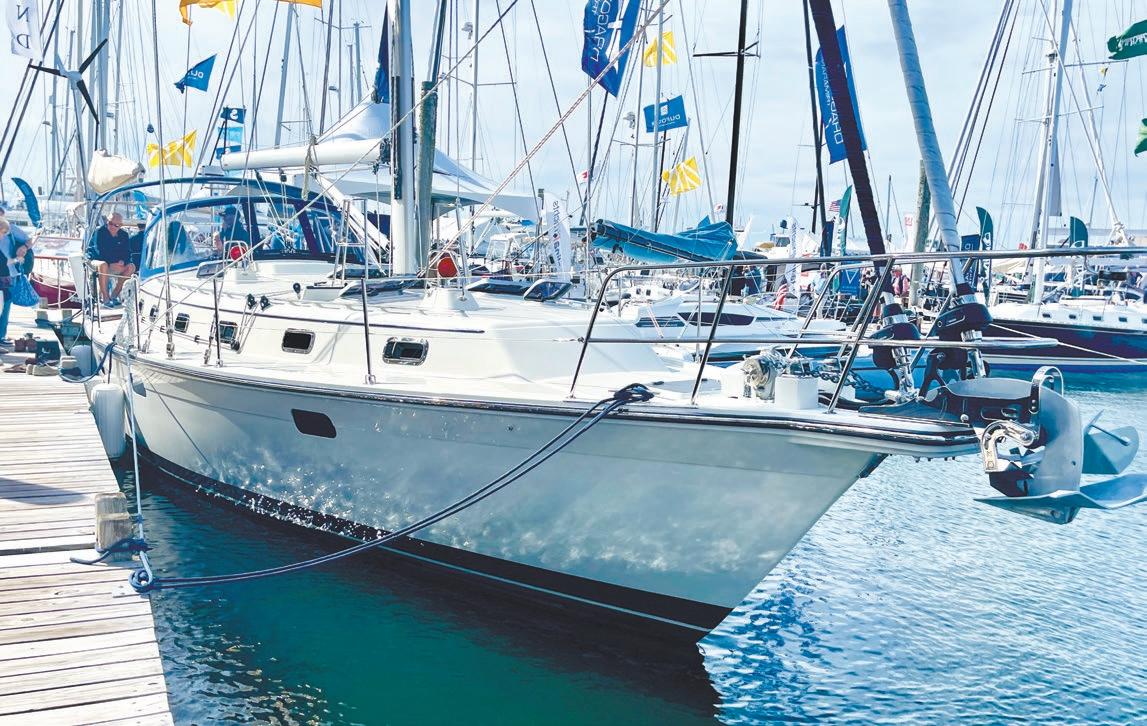
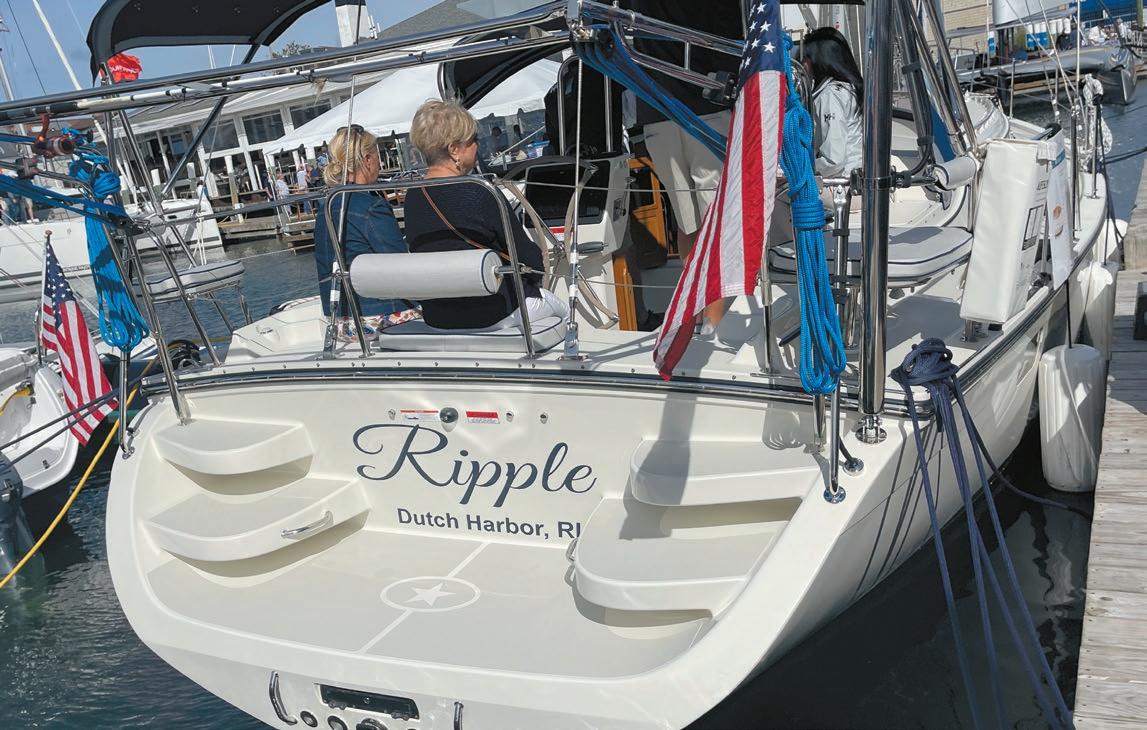
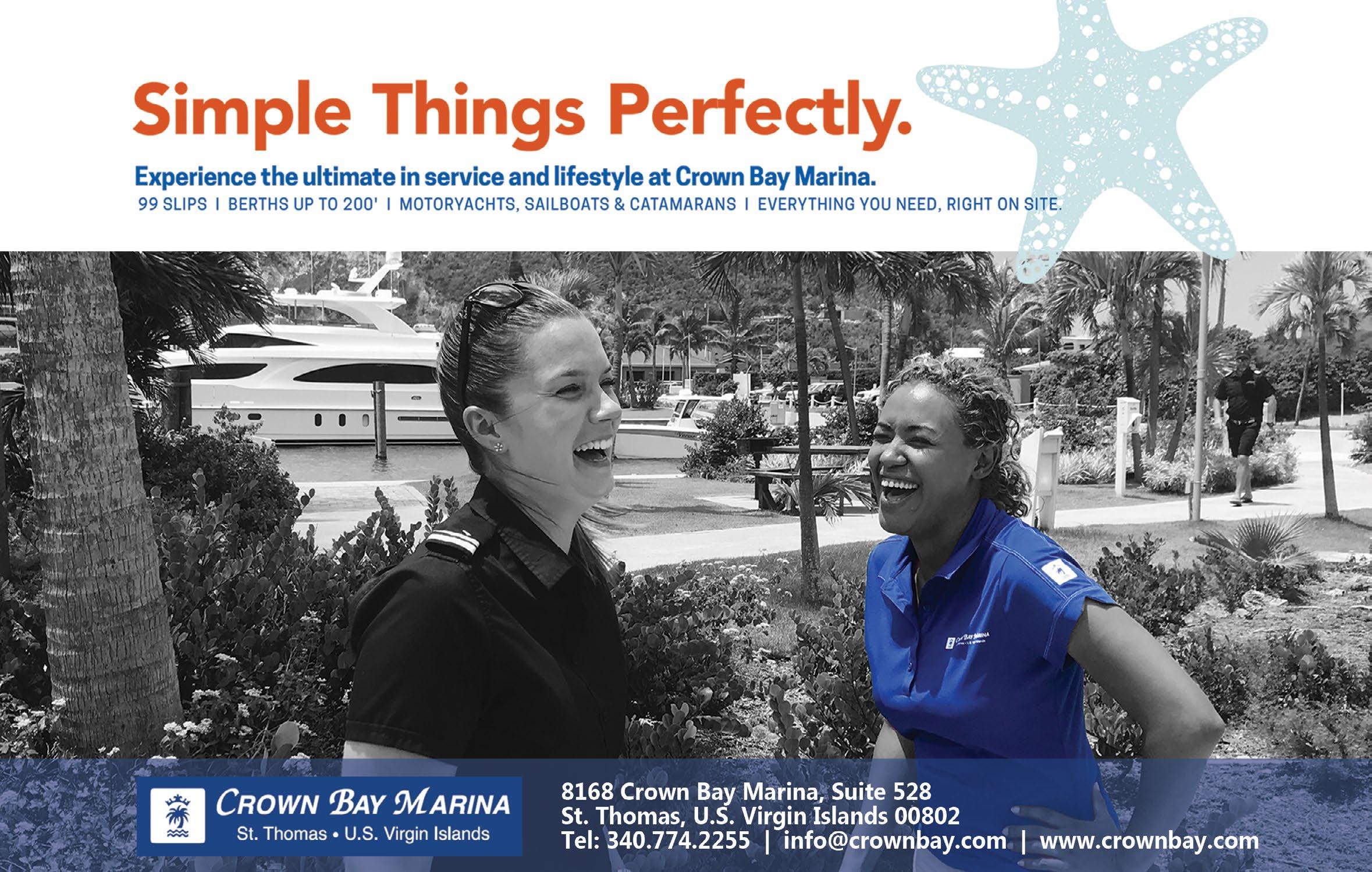

With a head stuffed full of college theory on yacht design, he lives in another world. I have 45 years of yacht ownership and 55 years of sailing experience that I bring to the table, or the car seat. But at least the two of us have something we can share, talk and argue about, and given the age gap (60 years) it’s amazing we even share a common language.
He asked if I’d seen anything I liked.
“Bits and pieces,” I replied. “But nothing that came together for a reasonable price.” Riding in the car for five hours, we began discussing, then arguing, about what makes an ideal cruising boat. Especially, one for the Caribbean.
“What did you like?”
“The Hylas 57 and the Bluewater 56. Both are capable of world cruising in comfort, but both are well over a million. They are so crammed with complicated systems, only a technically savvy skipper could handle them. A new owner would need to hire one who was.”
“What didn’t you like?”
“Many of the boats were designed and built as weekend toys, not serious offshore cruisers, and certainly not fitted out for the Caribbean. They were meant to be tied up in a slip during the week. The anchoring systems on many
appeared an afterthought, inadequate for Caribbean cruising. A few had no anchor at the bow at all.”
Caribbean cruising means you’ll be anchoring every night. This means two bow rollers on a well-built bowsprit to accommodate a heavy working anchor on chain on one roller; and on the second roller, a lighter Danforth on 30 feet of chain and 200 feet of nylon rode. You can slip this anchor into the dinghy and run it out when the wind picks up and a second anchor is called for. The windlass should be horizontal, with a chain gypsy and a capstan for the rode— in line with the rollers. And, a strong point or two to secure the chain, snubber, and rode, or a one-inch mooring pendent. During the 2023 boat show, the Island Packet was the only affordable boat adequately set up for Caribbean cruising that I saw.

“It all comes down to the owner’s intent,” Havana said. “What does the owner plan to do with the boat, and where will they sail it?”
—Continued on next page



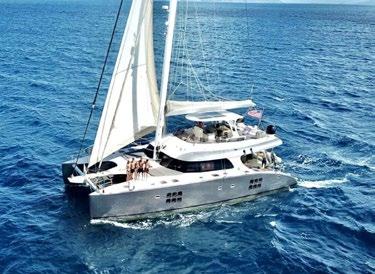
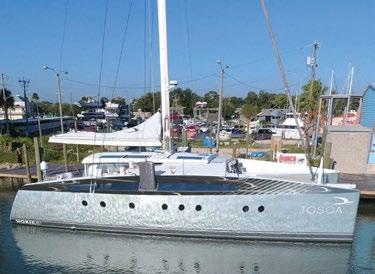







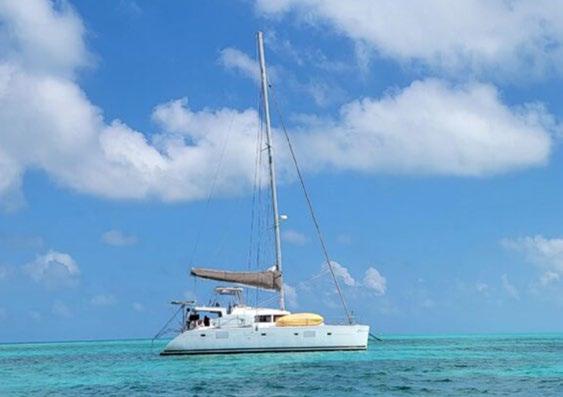
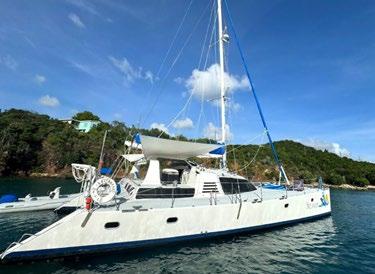
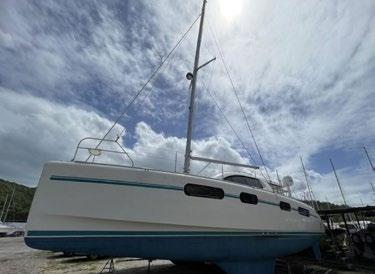





Scott Woodruff, a yacht broker at one of the seminars, explains it this way: “Use the 80/20 rule. Find a boat that fits 80 percent of your intended lifestyle,” he told the audience. “If it’s racing on weekends, that’s one kind of boat; coastal cruising is another boat; offshore passagemaking from Maine to the Caribbean is another, and a fulltime liveaboard boat in the islands means still another kind of boat. Planning on a winter in the Bahamas, that’s a shallow draft boat. The remaining 20 percent may include things that you do not like but can tolerate for a short period.”
“How many people does this Caribbean boat need to accommodate?” my son asked. “A couple, with the occasional guest couple? That means two private cabins, at either end of the boat. For a family of four on a monthlong cruise, perhaps three cabins, or the kids can sleep on deck, or camp out in the main cabin. Two heads?” My son was beginning to lay out such a boat.
“If this boat is going to remain in the Caribbean, it need not be well suited for an extended offshore voyage,” I added.
“But, if it is to sail back to the US or Europe each spring,” he explained, “an offshore passage would require a deep, or full keel, and a water length greater than 40 feet, 50 feet would be better.”
“The Pardeys sailed around the world, twice,” I added. “On 24- and then 29-foot wooden boats they built, each without an engine.”
“They were the exception,” Havana replied. “Boats 30 to 40 feet are slow, may not have sufficient tankage to sustain a two-week passage at sea. Shorter boats are for coastal cruising, weekend trips.”
—Continued on next page
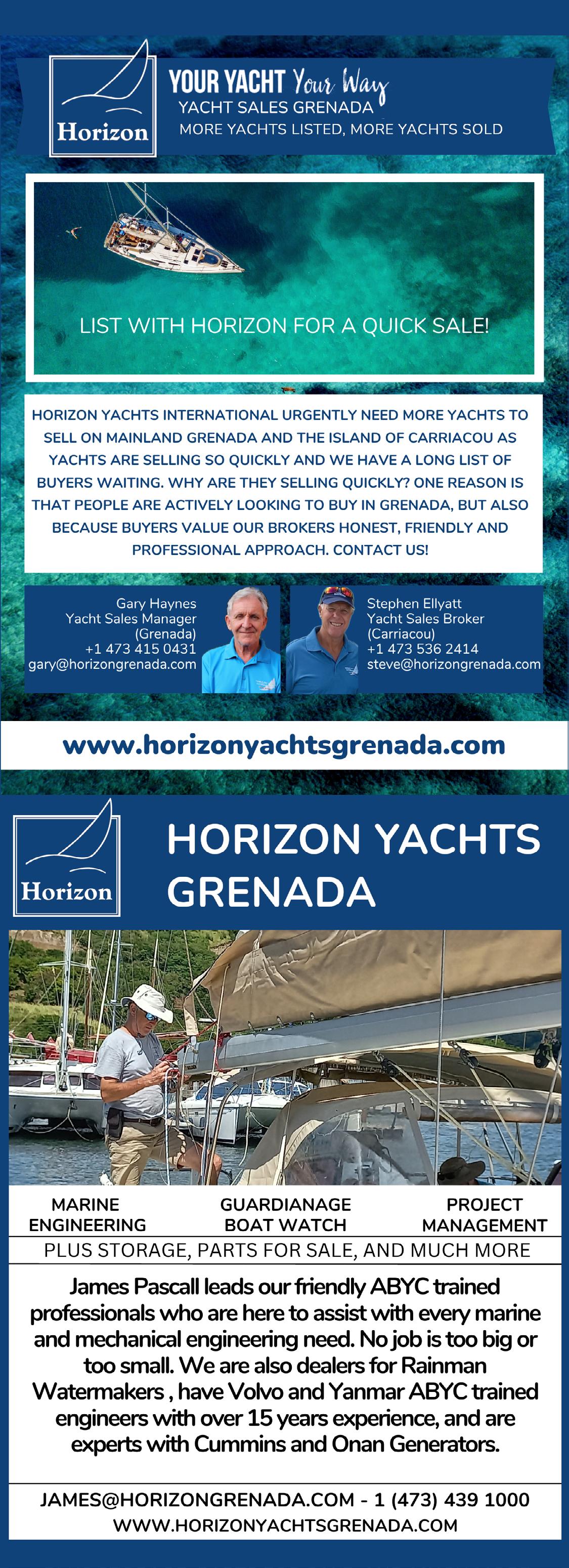
—Continued from previous page
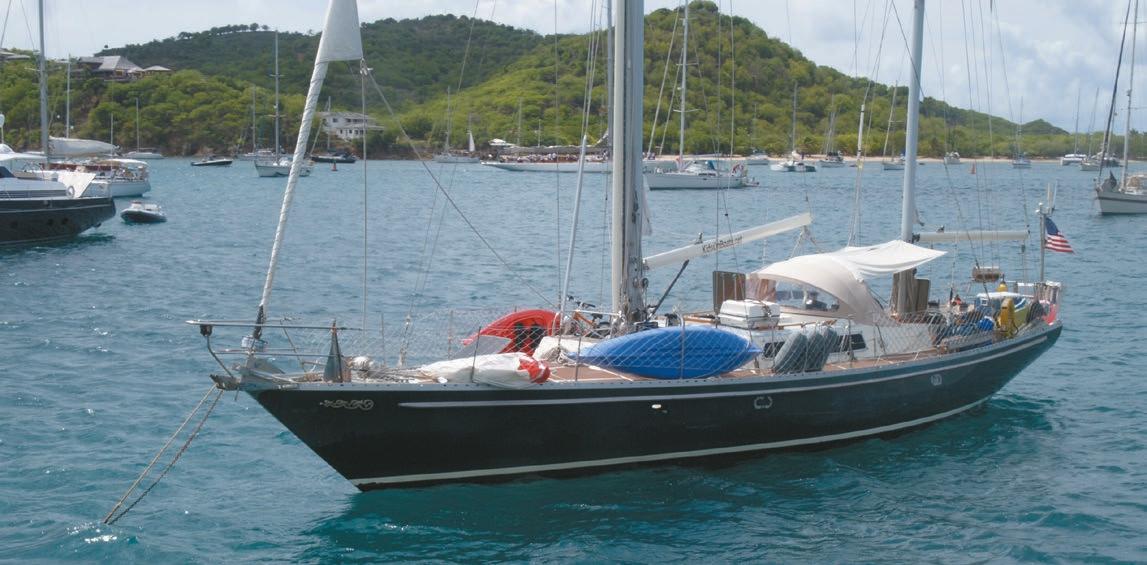


My third boat, Afaran, was a 41-foot Lord Nelson cutter, and I was 45. I made 10 solo passages between Maine and the Caribbean in the 80s. She carried 80 gallons of fresh water, with a 60-gallon fuel tank. There was another 30 gallons of fuel on deck. One September I motored all the way from Newport to Bermuda, 640 miles, in three days and 22 hours, arriving with less than three gallons in the tank. Every year, boats heading to the islands run out of fuel.
“How much water did Searcher carry?” Havana asked. He and his sister Ren grew up on that boat, spending two winters with us in the Caribbean.
“She carried 150 gallons of fuel and 400 gallons of water in two tanks, with four 6-gallon jerry cans of fuel on deck. We were then living aboard full time and ran out of water only once, after a month at anchor in Bequia. Daffodils came out with her floating fuel barge to resupply us. It was you kids showering five times a day after swimming that ran us out of water.”
“As a designer,” mused my son, “it all comes down to speed, comfort, aesthetics, or price. Pick any two.”
“Comfort and aesthetics are my choices. I want a boat that’s comfortable and classic, pleasant to look at. Call it PPO, Personal Pride of Ownership.”
“You can have a beautiful, classic looking yacht, but it’ll cost you speed and money. You can have a go-fast boat, but it’ll be uncomfortable.
“I prefer a boat that is comfortable offshore, even if it's a bit slower.”
“That’s why many boats are classified as racer-cruisers.”
“Or cruiser-racer.”
“Okay, let’s design a boat just for the Caribbean,” I told him. “What does it need?”
“Island hopping or an extended liveaboard, with an occasional daylong hop to the next island? Is swimming, snorkeling, or diving a big part of the picture?
“Yes,” I replied.
“If access to the water is a major consideration, that means a sugar scoop, or a drop-down transom to create a swim platform. Which means twin helms with a clear passageway from the companionway to the transom, and a folddown table in the middle of the cockpit,” Havana said.
—Continued on next page




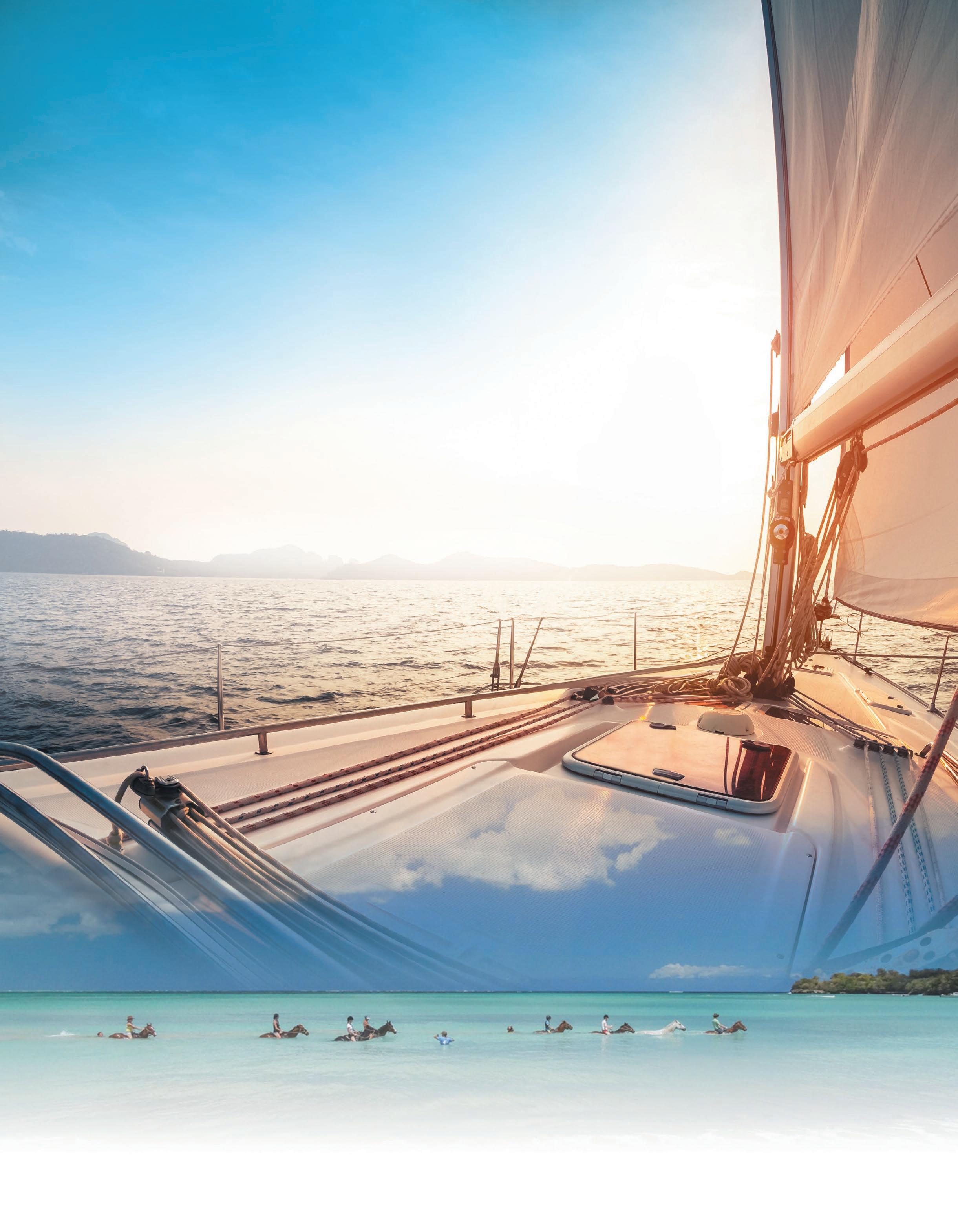


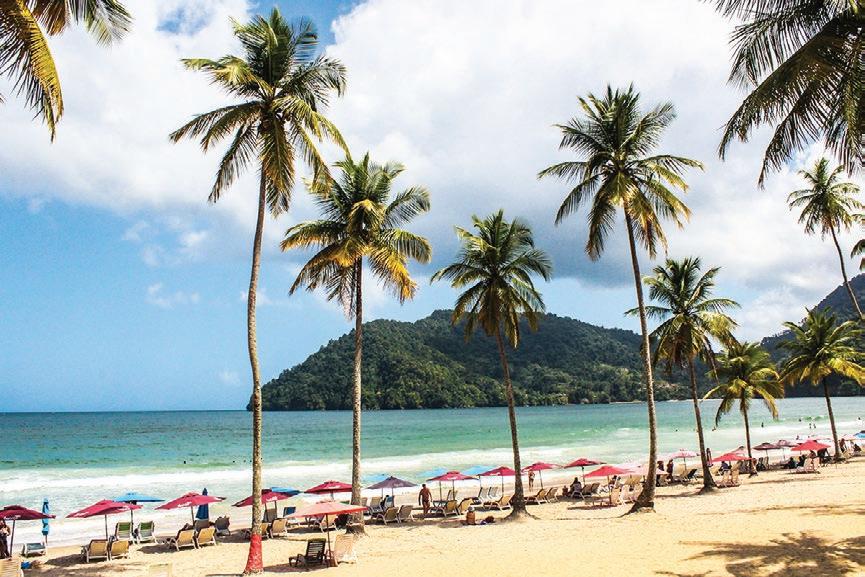

—Continued from previous page
“But this leads to a flat bottom boat,” I injected. “With a shallow bilge, leading to a boat that pounds in a seaway, it has less room for tankage, limiting its time between fuel docks.
“In the Caribbean, fuel docks are always available on the next island. Places like Bequia have floating fuel and water barges that come along side.”
As we discussed the parameters of this Caribbean boat, it was becoming less and less likely it would be sailed offshore on a two-week delivery from the US. There’d be not enough tankage, and the boat would be uncomfortable offshore. If the boat is to remain in the islands for the summer, the insurance company will want to know where it will be hauled and secured. It will want to see a written storm plan. Then you need to retrain a service company to care for your boat.
“Let’s consider a catamaran,” Havana said.
“They certainly have more living space, all on one floor, good access to the water, great visibility all ‘round,” I said. “It’s like living in a backyard patio, with the grill, the swimming pool, and everyone at eye level. And they don’t heel, much.”
“When we were learning yacht design in college, we had to draw up stability graphs indicating the heel and capsizing characteristics of various boats. Most boats designed for offshore cruising are tender, will heel a great deal, but will right themselves rather quickly when the heeling force is reduced. Racing boats heel to a point, then slow down, telling the crew to reduce sail or head up. Catamarans are stable until one pontoon leaves the water, then stability begins to diminish. Catamarans are the most stable when upside-down."
“Cats are uncomfortable to sail in anything other than winds aft of the beam,” I countered. “When sailing north between islands in the Caribbean, just wait until the winds come out of the southeast. It’ll be a fast 11-knot romp. Sailing, even on a beam reach, leads to an uncomfortable and inefficient ride on a cat.”
“But it only takes half a day to make those crossings,” Havana parried. “When the boat and crew reach the lee of the next big island, they are sailing along in a nice breeze in tranquil waters.
There are many things on which my son and I could agree, but he comes from another world, one of sailboats that go fast, and to hell with comfort.
“Faster and wetter the better!” He declared, with a smile on his face.
I’m at that age where I prefer sitting on the aft deck of an anchored boat, off the beach in Bequia, a tall glass with ice, rum, and tonic in hand as late afternoon recedes into a brief dusk, then slips into night.
To hell with which boat, here they are all just fine.
Sailor and frequent Caribbean Compass contributor David H. Lyman checks out as many islands and boats as is humanly possible and writes about them to his heart’s content.

“But, it only takes half a day to make those crossings,” Havana parried. “When the boat and crew reach the lee of the next big island, they are sailing along in a nice breeze in tranquil waters.
There are many things on which my son and I could agree, but he comes from another world, one of sailboats that go fast, and to hell with comfort.
“Faster and wetter the better!” He declared, with a smile on his face.
I’m at that age where I prefer sitting on the aft deck of an anchored boat, off the beach in Bequia, a tall glass with ice, rum, and tonic in hand as late afternoon recedes into a brief dusk, then slips into night.
To hell with which boat, here they are all just fine.
Sailor and frequent Caribbean Compass contributor David H. Lyman checks out as many islands and boats as is humanly possible and writes about them to his heart’s content.
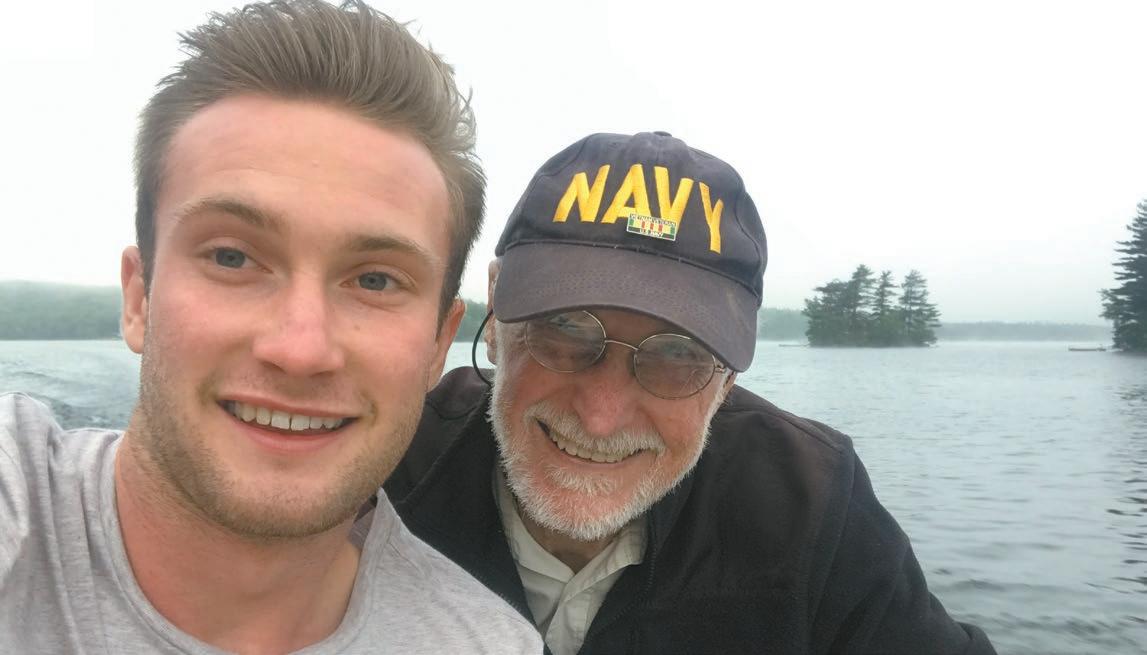
There are three things I feel a Caribbean boat must have:
1. A freshwater hose adjacent to the swim ladder, with an automatic shut-off shower head so no one inadvertently leaves the shower head on and empties the water tank
2. Sufficient awnings to shade the cockpit, with a drop-down curtain aft to shade the late afternoon sun from flooding into the cockpit.
3. A good anchoring system.
There is another option to owning a boat. Bareboat chartering, or sailing on OPB — Other Peoples’ Boats. The more boats you sail on, the more you know what to look for in a purchase.
—D.L.
By Michelle Slade

“Throwing a wing and foil board off the back of the boat, jumping into shimmering, warm, turquoise water and catching a nice trade breeze on my wing was a very cool experience while I was in the Caribbean this past winter,” says Jamie Deardorff, an avid sailor and sports person from Santa Barbara, California. “There are so many awesome spots in the Caribbean where you can go shred on a wing, where it is quiet, always pretty and with a nice steady breeze, whether it be off a boat at anchor in a harbor, or off a stunning beach. It’s the best.”
Deardorff spent several months last winter cruising and racing on a friend’s catamaran in St. Maarten and Guadeloupe. He spent a lot of time on his wingfoiling gear because conditions were consistently perfect — and easy — one of the reasons for wingfoiling’s growing popularity.
A sport which combines elements of windsurfing, kitesurfing, and hydro foiling, wingfoiling has been around for some six years and is one of the fastest growing water sports, appealing to all ages and sizes anywhere a body of water and decent breeze exist. It differs from its close relative kiteboarding
in a few key ways. Both involve the delightful sensation of riding a foil board (essentially a high-tech dagger that allows the board to fly over and not in the water) and then being lifted into the air by a sail-like device.
But wingfoiling is considered an easier sport. Kiteboarding utilizes long lines and requires careful attention when launching and landing. In wingfoiling, the rider doesn’t go as fast, there is no risk of tangling lines because the “wing” is hand-held, and the gear is just more maneuverable. The sport even has its own vernacular, like “lift off” (getting up on foil), “splash down” (coming off foil), and “taxi-ing” (standing on the board and cruising along but not on foil). The learning curve is quick if one has previous experience riding a foil; if not, be prepared to put time in on the water, or better still, take a few lessons on an electric foiling board to get the feel of the foil.
The most coveted condition for wingfoiling is a wide-open sandy beach with a steady side-to-onshore breeze, so it is not surprising that many Caribbean islands offer opportunities for experienced (and newbie) wingers.
—Continued on next page
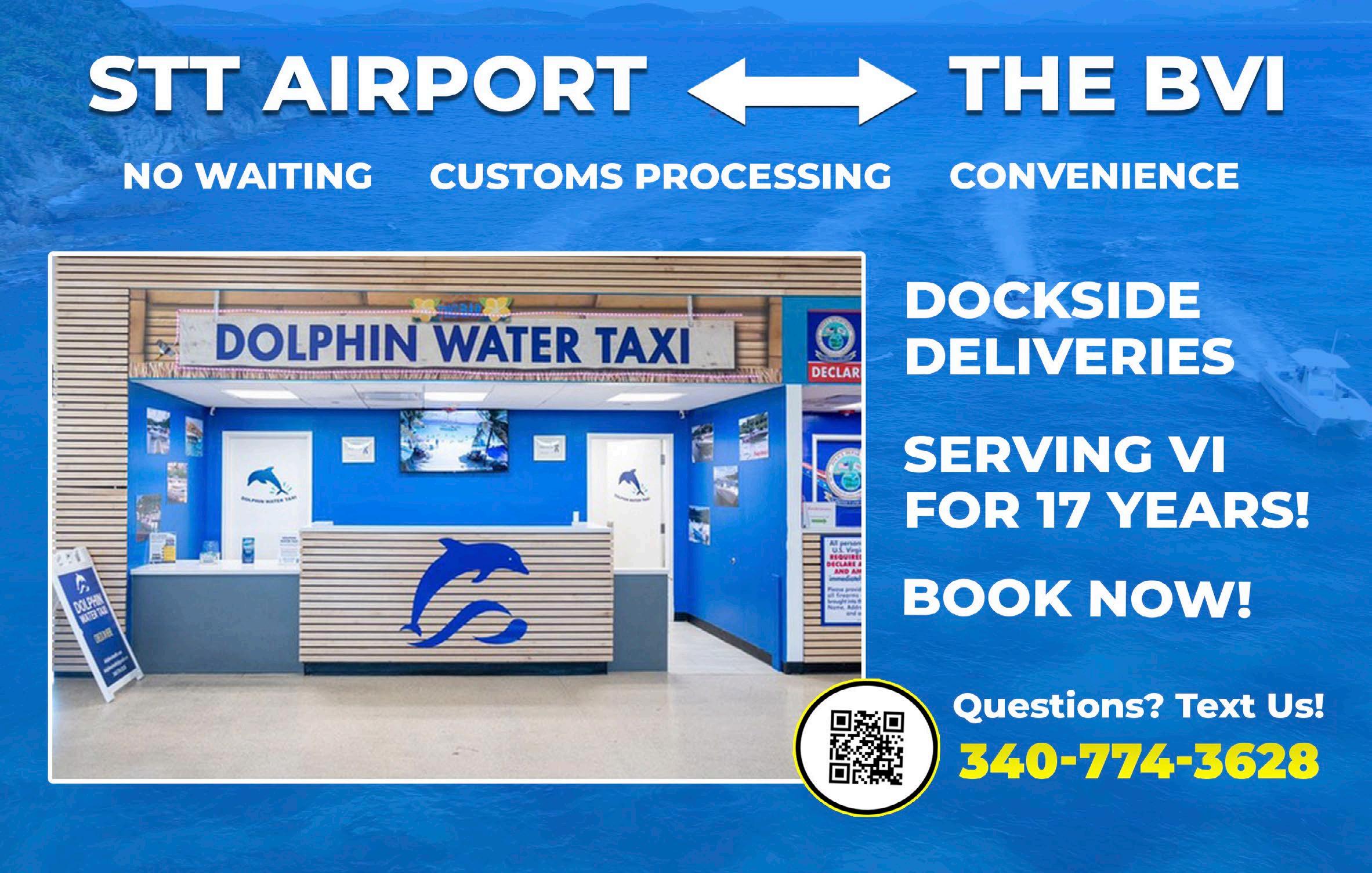

















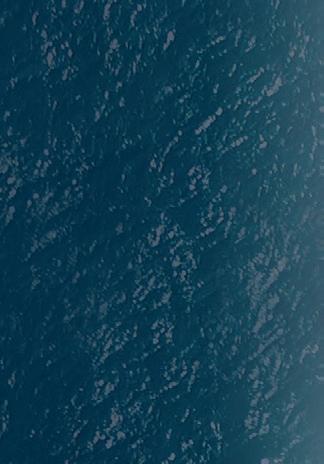





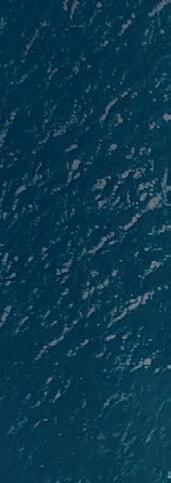

























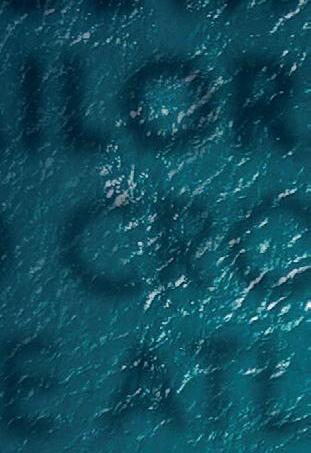



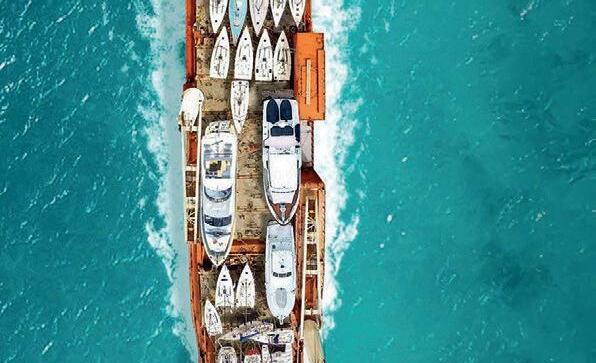














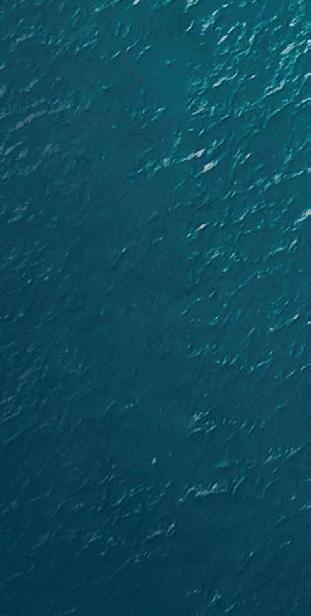



















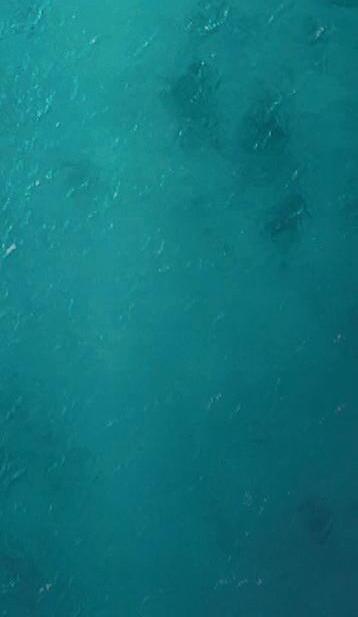















SANDER SPEET
+31 6 432 400 8 s.speet@sevenstar.nl





SANNE VAN DEN HEUVEL
+31 6 899 317 60




















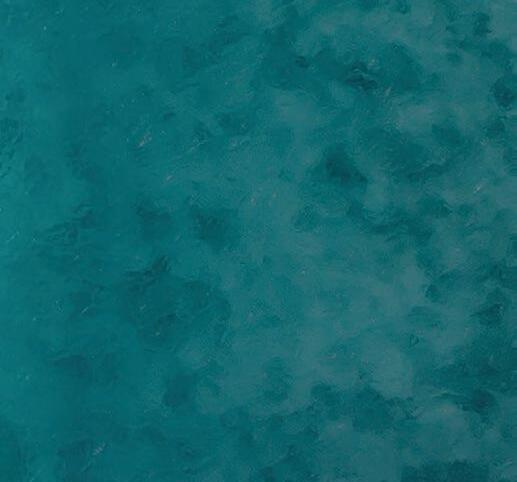


























NORTHERN EUROPE TO CARIBBEAN OCT 15-30 | NOV 15-30 | DEC 15-30











MEDITERRANEAN TO AMERICA EAST COAST OCT 10-25 | NOV 10-25 | DEC 10-25


CARIBBEAN TO MEDITERRANEAN
MARCH 15 - APRIL 5 | APRIL 15 - MAY 5
AMERICAN EAST COAST TO EUROPE
MARCH 01-15 | APRIL 01-15 | MAY 01-10













—Continued from previous page
Tommy Gaunt runs a water sports operation at Anegada Beach Club in the British Virgin Islands and has expanded the center to offer wingfoiling on the south side of the island where the water is deep enough to launch a wingfoil board — the hydrofoil that is attached to the bottom of the board needs water depth.
“We have a lot of visitors to the island interested in wingfoiling thanks to the great conditions for learning — calm, flat water and steady breeze,” says Gaunt. “We use the south side of the island for taking beginners out on our boat so that we can follow them around, which facilitates their progress in getting up on the foil. We take them downwind first, then get out and hit the wind line and hopefully the beginner is able to get up. The most challenging part for students is learning how to foil, which is 80 percent of the sport. Most people can fly the wing in half an hour but understanding the way that the board lifts when it begins to get up on the foil takes getting used to.”
Jake Kelsick, born and raised in Antigua, owns a watersports center with a focus on kiteboarding, wingfoiling and wake foiling. He’s traveled all over the world to partake in kiting and wingfoiling, but home in Antigua is where he likes to be.
“Wingfoiling has been blowing up over the past few years, it’s been crazy to see the growth,” enthuses Kelsick. “The local Antigua scene is still tiny — maybe ten to twenty of us just like it was with kiting, but people are coming to Antigua on vacation to wingfoil and bringing their gear with them. About 40 percent of our students are taking wing lessons compared to two years ago when we had zero students taking lessons. There’s a huge interest.”
Kelsick notes that lessons are $150 an hour, give or take, with lessons lasting up to two to three hours depending on what a winger needs. All gear and boat support are provided.
“The biggest challenge is foiling, and even when you do know how to foil the next step is putting it all together, having enough time so that you have at least three days to build a foundation,” says Kelsick. “Once you get on the foil the only thing that changes is your power source and the wing is all about controlling that power source.”

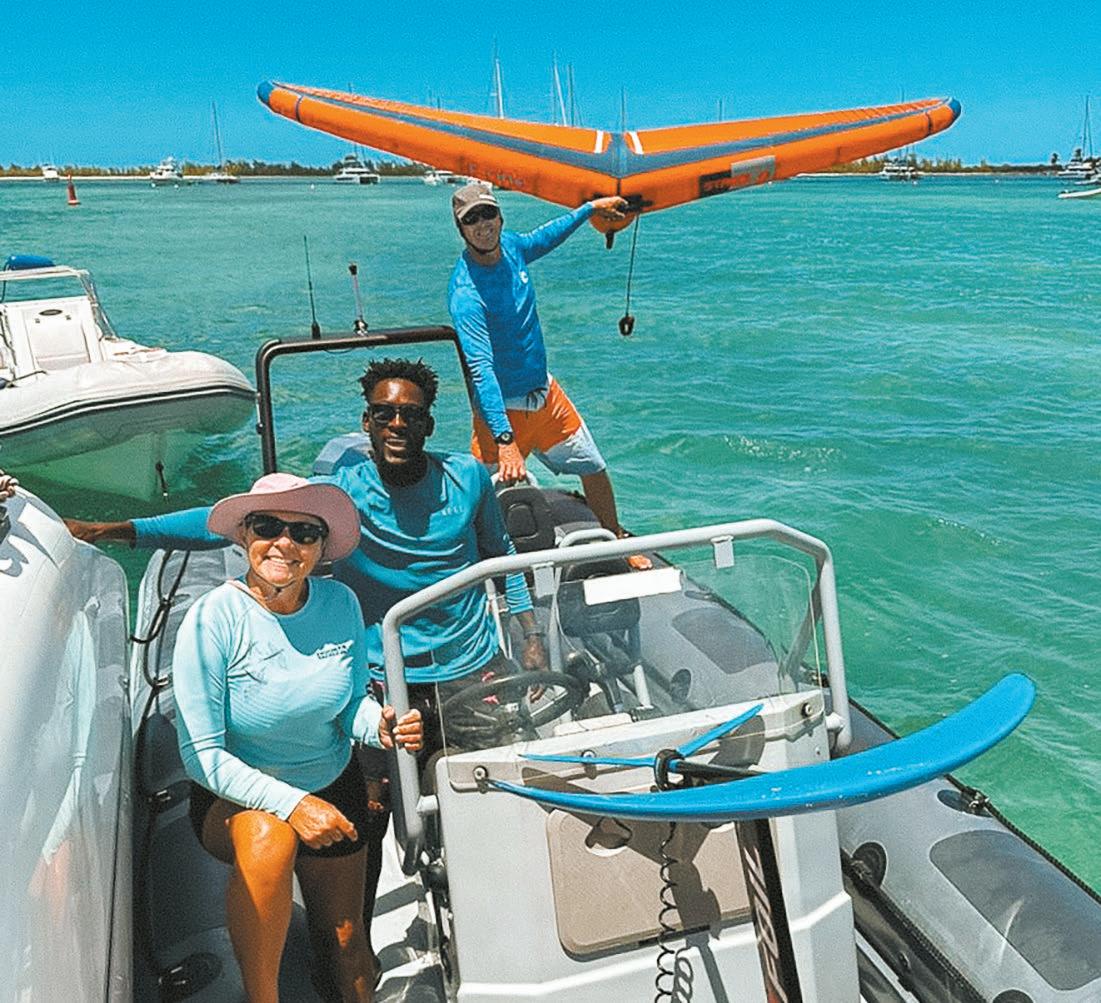
Learning to wing foil in Anegada the easy way — boat assist!
Wingfoil racing events in the Caribbean are slowly evolving. In 2023, Puerto Rico hosted the North American Championship and AWBG (World Beach Games) Continental Qualifier; Antigua Sailing Week now offers a pure wingfoiling competition which Kelsick has been instrumental in organizing, and in the Dominican Republic, the annual Cabarete Wing Fest held in the summer is an extravaganza of racing, pro clinics, epic downwinders, gear demos and of course, great Caribbean beach parties and is now a fixture on that island’s calendar.
—Continued on next page



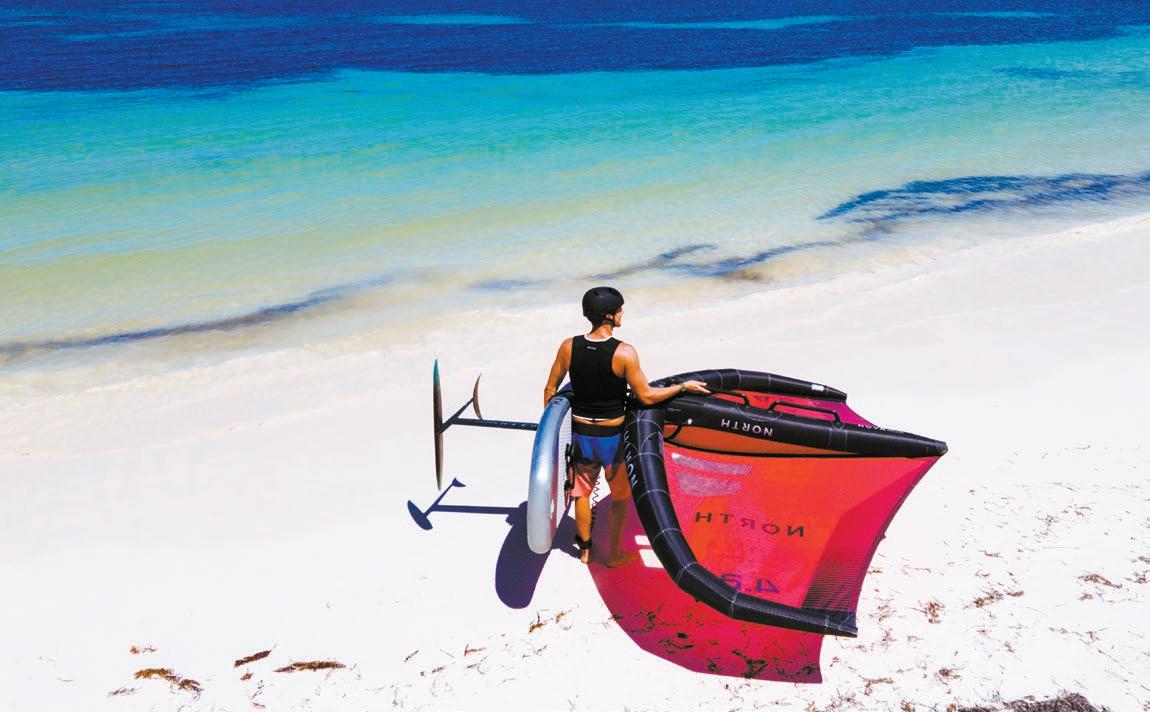
This winter, get your wingfoiling game on at any one of the Caribbean’s wingfoil hot spots:
• Martinique: Vauclin, Anse Michel, Sainte-Anne, and Cape Knight
• Dominican Republic: Cabarete, Las Terrenas, Playa Grande, Punta Cana, Puerto Plata
• Turks and Caicos: Long Bay Beach, Grace Bay, Leeward Beach, Salterra Beach, Bell Sound, Plandon Cay Cut, McCartney Cay, Middle Creek Cay, Long Cay
• Bonaire: Lac Bay
• St Lucia: Coconut Bay Beach
• Puerto Rico: Playa las Picuas, Rio Grande, Playa Ocean Park, Vivo Beach, Shack Beach
Or follow Deardorff’s foiling wake: Wing from your private or charter boat where the launch possibilities are simply unlimited.




Story and photos by Margo Ask


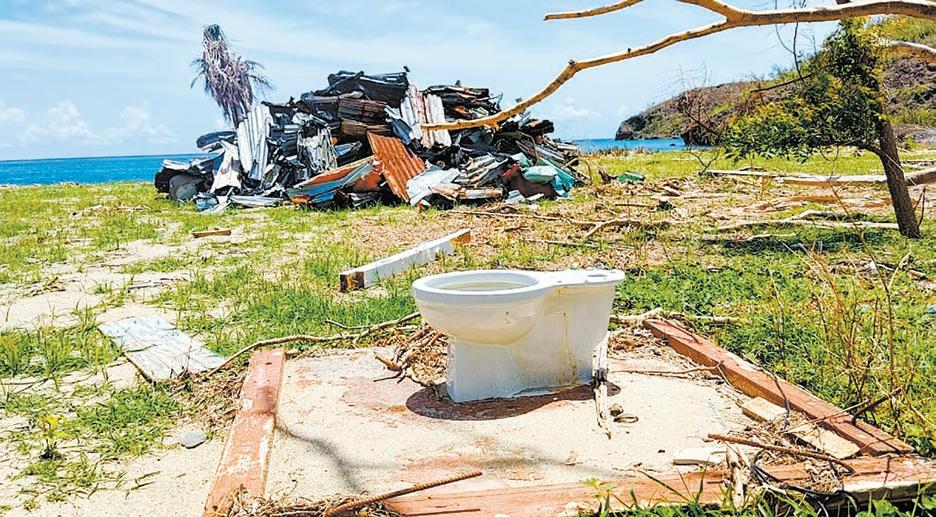
We prepared this Caribbean meal with Susanna in August 2023. She was talking about her plans for the future, saying that by the next August, she would build a barbecue station and possibly a pizza oven, and she was already planning which new recipes she would show me.
But unfortunately, Hurricane Beryl disrupted those plans.
Chatham Bay and the entire Union Island were almost completely destroyed. Of course, I tried to contact Susanna right away, but she’s not very attached to her mobile phone, especially when she’s deeply involved in her restaurant work. She got in touch a week after the hurricane.
The only thing she could say then was that she had been in Chatham Bay, completely absorbed in building the barbecue and pizza station, and didn’t realize how serious the weather forecast was because she didn’t have a radio, and her mobile phone was dead. So she only learned about the severity of the approaching storm shortly before it hit, from her neighbors.
“Oh, my dear, let’s not talk about how it was. I can’t bear to remember. Beryl took my home and my restaurant, but I’m grateful that it left me my children,” Susanna told me.
“Let’s talk about the future instead,” she said.
That’s what I’ve always admired about her — she never gives up. She was staying in a temporary shelter with her five children, and all her thoughts were on how to find a new home, provide a stable life for her children, and return to doing what she loved.
She was told that building in Chatham Bay wouldn’t be allowed for the next two years (the reasons are unknown to us).
I spoke again with Susanna in mid-August, and she happily told me that she was preparing her children for school on St. Vincent and had applied for assistance to start building a restaurant. “I will reopen Sunn Dipp, even if it’s in a different location, because I want to cook and make our traditional food popular. I’m already thinking about new dishes I’ll happily prepare for my guests, and I’m considering a new spot at Canash Beach.”
This woman deserves respect and admiration — alone with five children, having lost her home and the restaurant that allowed her not only to do what she loved but also to feed and raise her children, giving them the opportunity to get an education.
She gathered her strength and started over from scratch. It’s just the beginning, and there are still many questions about where exactly the restaurant will be, when it will open, and so on. But I believe that even strong people need support, so if you’re in the St. Vincent area, google Sunn Dipp — it

may already be open — stop by for lunch at Susanna’s place; that would be the best support. And if you have any other ideas on how we can support this strong and passionate woman, let me know (https://www.instagram.com/ sailingkanoa), and I’ll connect you with Susanna.
Daily Food from Union island
Summer in the Caribbean brings hurricanes and camaraderie among liveaboard sailors who navigate the islands. Many of us had already crossed paths in Spain before embarking on our island-hopping adventures. Sometimes, serendipity brings familiar faces to unexpected places, as it did on Union Island.
Amid the fleet of boats anchored in the bay, we found ourselves among old friends. Susanna (Susan Hilora noel (nee) Jacobs), the owner of a beachside café in Chatham Bay, offered to teach me the secrets of local cuisine. I was not going to miss the chance to learn about the island’s recipes while enjoying a Caribbean feast with liveaboard friends. I asked Susanna to prepare a meal she would cook if her five children and their families visited her unexpectedly.
Cooking for a large company was familiar to Susanna. Within the next hour, she transformed our gathering into a Caribbean palette of flavors and colors, from saffron rice and stuffed potatoes to fried plantains, fresh green salad, and fried mahi-mahi. She explained that playing with colors in food was crucial to her; each dish should combine flavors and create a visual feast for the eyes.
Just as simple colors create masterpieces, Susanna combined essential recipes to create unique blends of vibrant colors and flavors. Her artistry extended beyond combining dishes; timing was imperative to ensure each dish was served at the right temperature.
As I savored each bite, I marveled at how simple ingredients were transformed into a work of art. The palette of colors on our plates mirrored the vibrant surroundings of the Caribbean.
This Caribbean feast was more than a meal; it embodied the region’s lively, diverse, and captivating spirit. Each stroke of Susanna’s culinary prowess brought us closer to the heart of Caribbean cuisine. As the sun set over Union Island, our senses were sated, and our souls were nourished.
—Continued on next page
Susanna cooks for you in her Caribbean kitchen on YouTube: https://youtu.be/dX01Nx7PAxk?si=JKiDX4IwNNIEYTiv
—Continued from previous page
Caribbean Symphony of Flavors and Colors
Yellow-Green Saffron Rice
1 cup rice
½ tsp turmeric
1 onion
2 cloves of garlic
2 cups water
1 tbsp dried parsley
1 green pepper
salt and oil for sautéing
Sauté onion and garlic in oil, add turmeric and soaked and rinsed rice. Cover and let the color envelop the rice for 3 minutes without adding water. Stir from time to time. Add the water and dried parsley and cook until ready. Sauté green pepper and garlic and add to the cooked rice before serving.
White-Orange Stuffed Potatoes
8 medium potatoes
2 cloves of garlic
1 carrot salt and oil for sautéing

Boil potatoes in their jackets until tender. Sauté finely chopped garlic and carrot with salt. Stuff the potato halves and sauté the stuffed halves before serving. Optionally, add salted fish to the mixture for an extra burst of flavor.
Golden-Brown Plantains
2 ripe plantains and oil for frying
Slice plantains into 1.5-2 cm thick slices and sauté them in oil until golden brown on both sides.
White-Green Salad
2 cups shredded fresh cabbage
1 green pepper
1 cucumber
vinegar and oil
salt and sugar
Finely shred fresh cabbage, green pepper, and cucumber. Dress the salad with vinegar and oil, season with salt, and balance the taste with a touch of sugar.
Golden-Red Fish with Signature Sauce
4 fillets of mahi-mahi
Or other local fish
salt and pepper
1 onion
2 cloves of garlic
2 tbsp. tomato paste
2 tbsp. soy sauce
1 tsp. ground coriander
A drop of chili sauce
water for sauce consistency oil for searing
The fish is usually whatever the village’s fishermen catch; in our case, it was mahi-mahi. Season the fish and sear the fillets, then prepare the sauce by sautéing onions and garlic with tomato paste, soy sauce, coriander, and a drop of chili sauce. Add water as needed for the desired consistency. Serve the sauce with the fish.
Margarita Askolskaya and her partner Joerg sailed the world aboard their Lagoon 380 catamaran, immersing themselves in local cultures, with particular emphasis on food as it is cooked and enjoyed in the kitchens and on the tables of the people they met. In 2022, their journey took them to the Caribbean, where they visited islands and dined and met the people who created the meals, and who shared their recipes. The result is the work by the author under her pen name, Margo Ask: Sail, Spice & Savory Seas. Find it at on Amazon at https:// www.amazon.com/dp/B0CQD61QV8?fbclid=IwAR1zYDy7eiOIQCnZ9vWAxYXh P4X2c306933IfcE0OvfJbn_eTJhCVF3Ldf0 or in ebook form from https://play. google.com/store/books/details?id=rHvnEAAAQBAJ, or order it from your local independent bookstore.

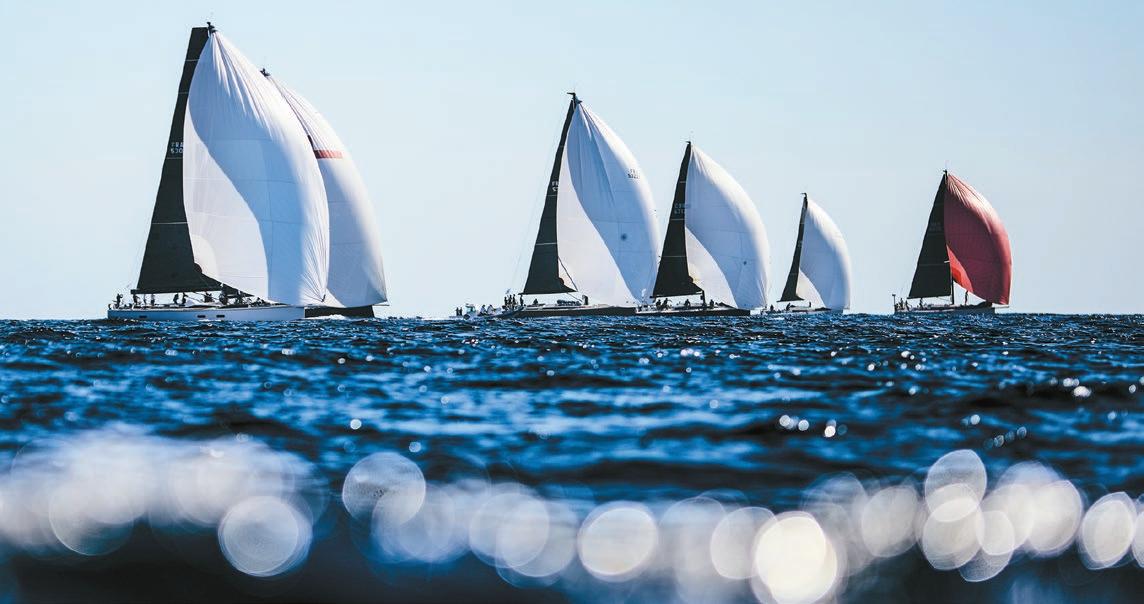
The talented youth sailing squad of the St. Vincent and the Grenadines Sailing Association (SVGSA) defeated professional yacht skippers from Tradewinds Yacht Charters in the ILCA 6 class at a competition held at Blue Lagoon Marina in late September 2024. Tradewinds Yacht Charters had recently relocated its base of operations to Blue Lagoon Marina after Hurricane Beryl had impacted its base in the Grenadines.
“It was a wonderful experience for our youth racing squad to compete against professional yacht skippers,” said Sabrina Marks-Dasent, SVGSA performance manager. “It not only tested their skills but also introduced them to the broader opportunities of pursuing a career in sailing.”
On the Horizon
Budget Marine Round Grenada Regatta
There is still time to register for the Budget Marine Round Grenada Regatta, November 8-10. The race is open to yachts of all sizes and types. It starts and finishes at Le Phare Bleu, with an overnight stop in Tyrrel Bay, Carriacou. Participating yachts may sail up to Carriacou on either side of Grenada, but must return on the opposite side, so this is truly an around the island race. There will be after parties on both days.
Register at https://docs.google.com/ forms/d/e/1FAIpQLSfVa_6DNf9Poh-uX7KHESRAqxyUjYePnr9Kkq59FYlNxIWw yA/viewform
Or email pcycgrenada@gmail.com.
RORC Transatlantic Race
The 11th edition of the RORC Transatlantic Race starts on Sunday,
Time Out Boat Yard Saint Martin
Next to the French Bridge


Fiberglass + Epoxy & Polyester Resins
Epoxy primer + Polyurethane Top Coat
Phone: + (590) 690 221 676 info@boatpaintstuff com www.boatpaintstuff.com
January 12, from Marina Lanzarote, Canary Islands, and will finish at Camper & Nicholsons Port Louis Marina in Grenada.
Port Louis Marina, across the lagoon outside Grenada’s capital St. George’s, boasts a secure, gated environment with ample parking, a full service boat yard, and a choice of bars and restaurants.
A new development at Port Louis Marina, begun at the end of 2023 and expected to be fully operational before the RORC race reaches its destination, is a beach club-style facility consisting of a café area, bar and poolside restaurant.
The 3,000 mile RORC Transatlantic Race leads off a year in which the Royal Ocean Racing Club celebrates its centenary.
For more information including on-line entry and the Notice of Race: https://www.rorctransatlantic.rorc.org

Virgins to Host VX One Caribbean Cup Organizers of the St. Thomas International Regatta (STIR) and BVI Spring Regatta & Sailing Festival (BVISR) are partnering with VX One to host the second VX One Caribbean Cup. The Cup allows racers to compete in a VX One one-design class in the STIR (March 28-30, 2025) and BVISR (April 4-6, 2025).
Nearly 12 boats from the VX One North American class association have already committed to participating, and the class expects at least 18 total or more to race.
Join the conversation on the 2025 VX One Caribbean Cup’s Facebook Group. Or contact Tim Pitts at +1 (401) 419-9010 or Email: pitts.timothy@ gmail.com
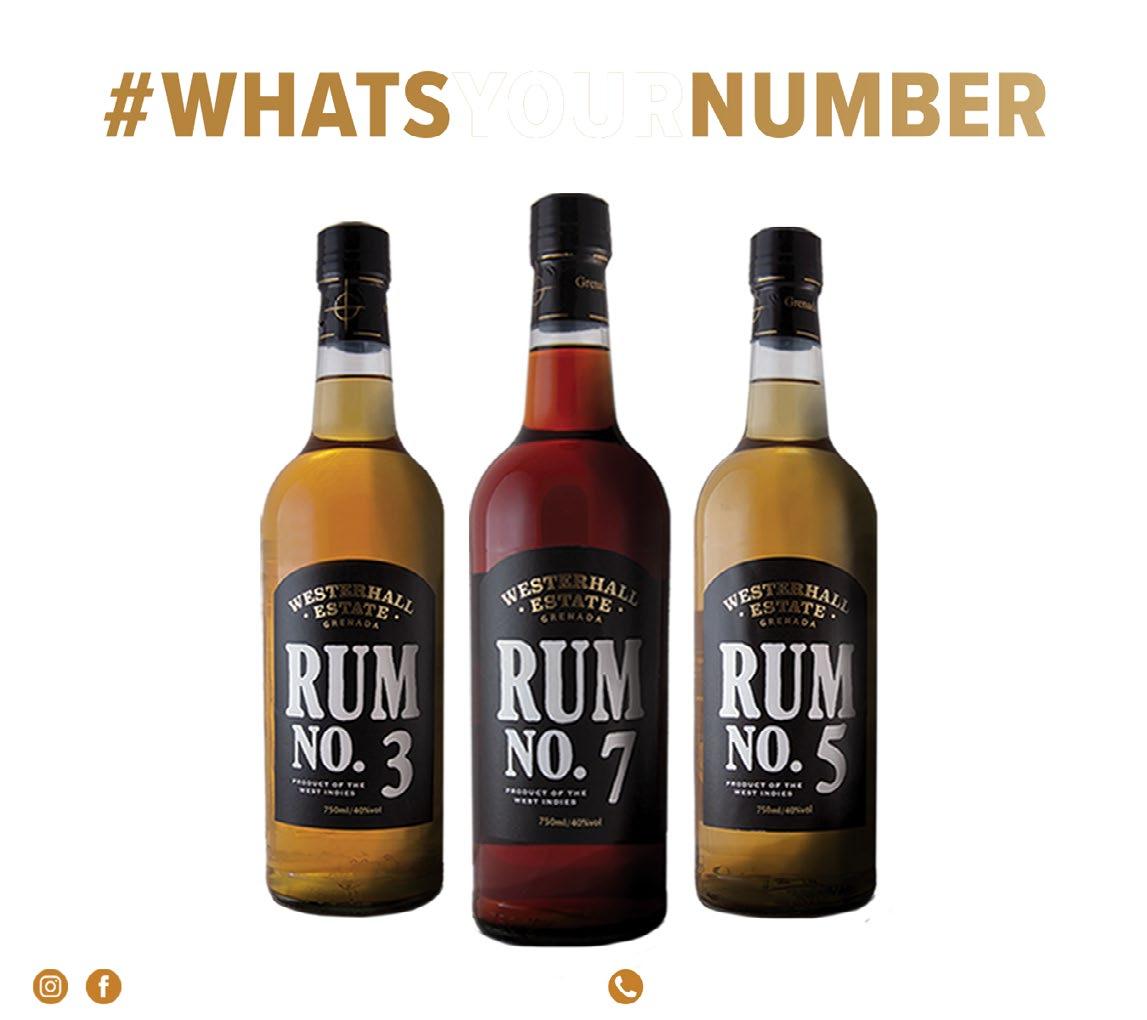
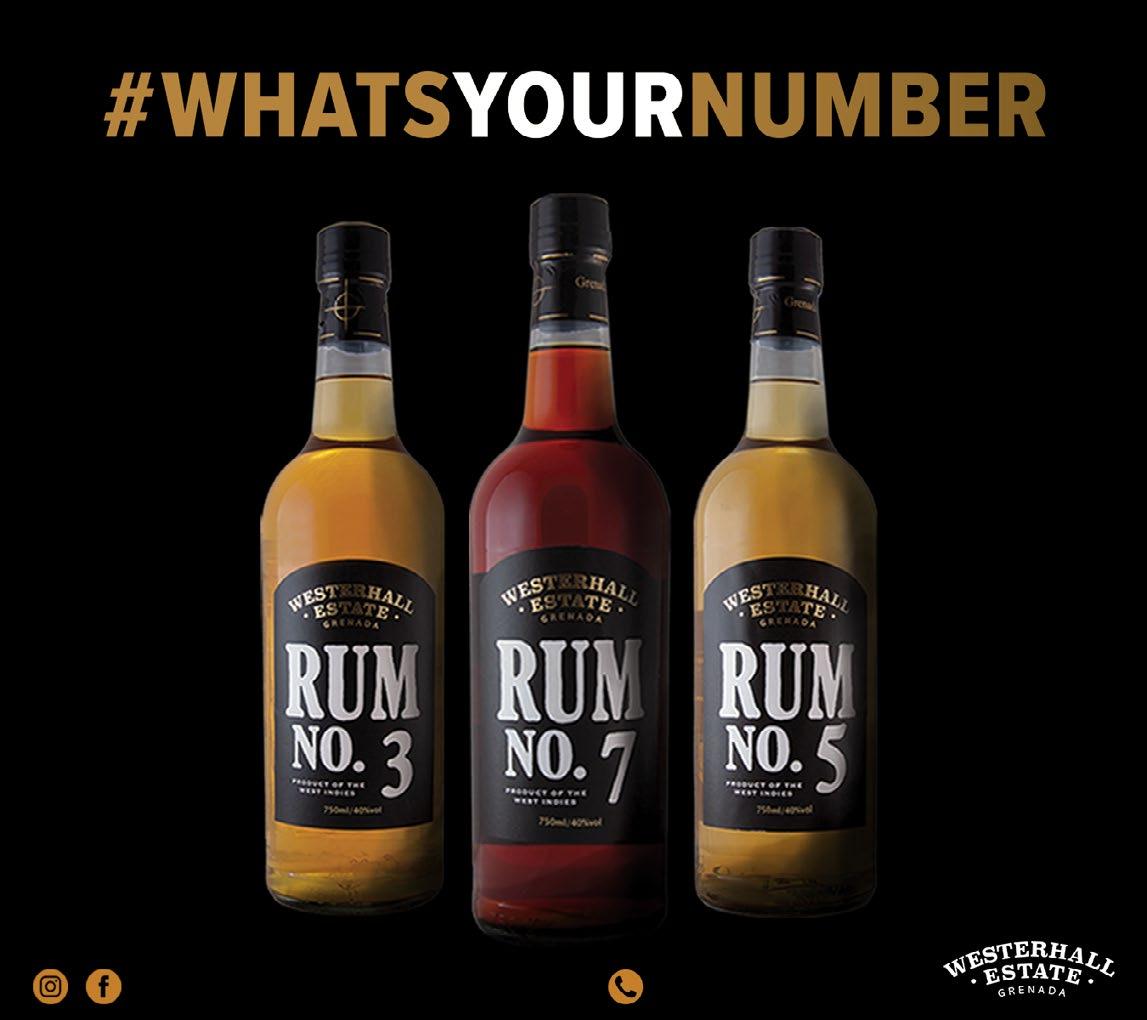

Story and photos by Darelle Snyman
The Caribbean Sea hosts a vibrant tapestry of marine life, but the reef fishes, adorned with the most intricate body patterns and colors, attract our attention. These body adornments are not merely for aesthetic appeal and a way for us to identify these beautiful creatures, highly useful traits as those traits are for us. Color and pattern adaptations form essential tools in their arsenal to interact and survive within their watery home. The stunning array of hues and designs reef fish exhibit play a multitude of roles in their daily lives, from camouflage to courtship and social signaling.

One of the most common reasons for color and pattern adaptations among reef fish is for camouflage. Not all fish want to stand out; many prefer to remain incognito and use color to blend in with their surroundings, either to avoid predators or to ambush unsuspecting prey. Masters at this strategy within the Caribbean Sea include flounders, trumpetfishes, scorpionfishes, and one of my bucket list fish to photograph, the frogfishes. I personally think frogfishes win the award for being the best at camouflage, but a close second would be the spotted scorpionfish (Scorpaena plumieri). They rely on their incredible camouflage ability even more than their venomous nature to pounce on unsuspecting prey. I have been lucky to encounter these sulky looking fish a number of times, and each time I felt extremely lucky that I was actually able to spot them. Their diverse mottled coloring, combined with the fleshy plumes over the eyes and characteristic skin flaps, allows them to blend exceptionally well into their surroundings.
When it comes to possessing chameleon-like capabilities to blend in, we cannot ignore another Caribbean resident, the peacock flounder (Bothus lunatus), named for their iridescent blue spots. These flat fish are able to adjust the color pigments housed in specialized cells, called chromatophores, in their skin to blend in with a remarkable variety of surroundings, from sandy bottoms, coral reefs, to even patterned surfaces. These color changes can happen within a matter of seconds and this blending ability is greatly affected if the flounder becomes blind or has a damaged eye.
A truly fun find in the seagrass beds in Bocas del Toro, Panama, was the bridled burrfish (Chilomycterus antennatus), a spiny little creature that uses its mottled yellowish-brown body dotted with numerous black spots to blend in rather than advertise its toxic, unpalatable nature. I enjoyed following this little critter as it would swim a short distance and then go lie motionless among the seagrass, acting as if it was invisible. It has the ability to become lighter or darker, depending on the situation. I do consider it a lucky find as its coloring is perfect for blending into a visually cluttered environment such as a seagrass bed; I would not have spotted it if it had not swum away when I startled it.
Where some fish hide and blend in, others actively forage, and these have to exhibit another form of camouflage to reduce their chances of becoming a predator’s next meal. A host of reef fish rely on disruptive coloration to break up their shape and form, making it difficult for a predator to spot them. Stripes and bands are the tools most commonly used to disrupt a fish’s silhouette.
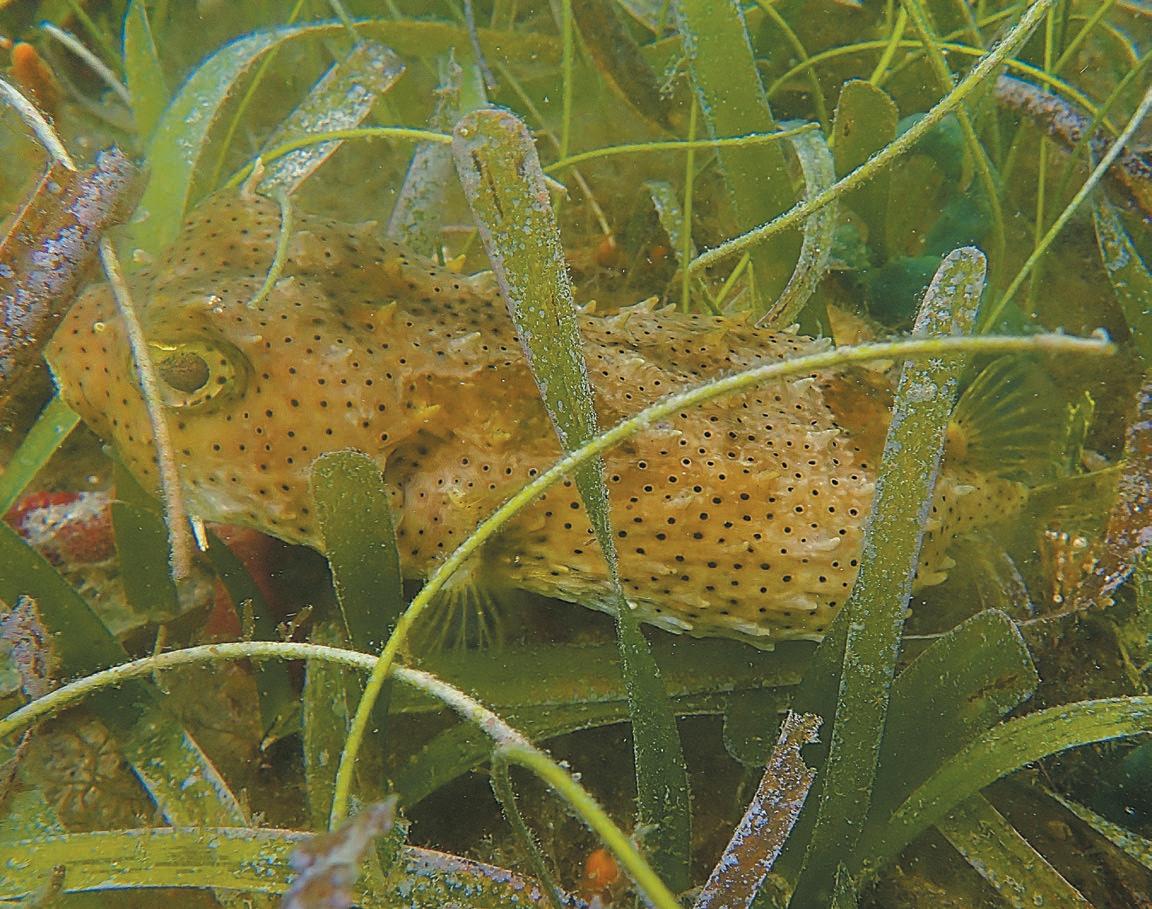
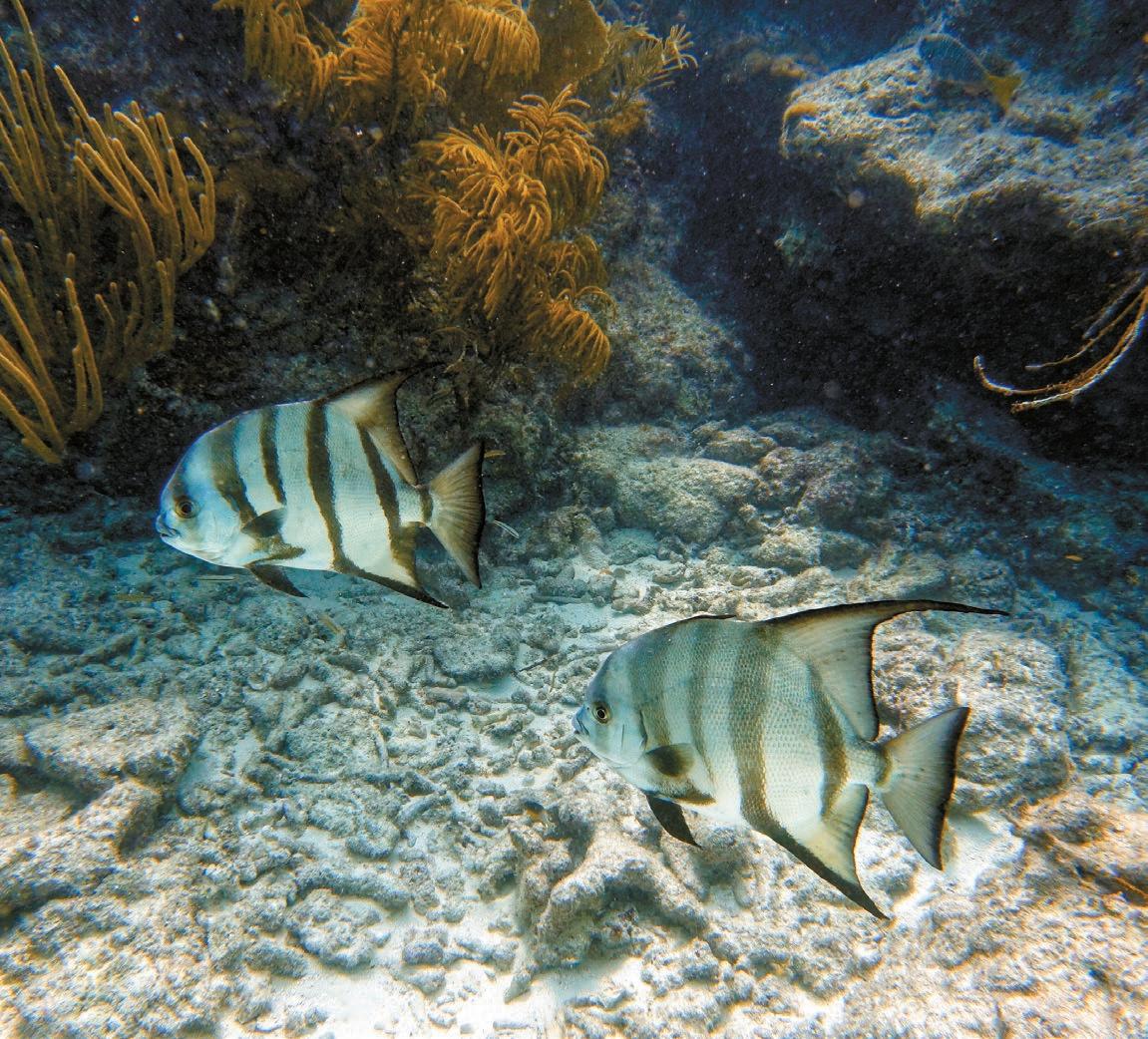
Its bands of black can appear to shift and blur as the fish moves.
This strategy is particularly effective in environments with dappled light such as coral reefs. Schooling fish like the Atlantic spadefish (Chaetodipterus faber), with distinctive disk-shaped bodies draped in bands of black, use this strategy effectively. As the fish move, the bands can appear to shift and blur. making it difficult for the predator to target a specific individual. Another important element in disruptive coloration is the addition of a facial stripe that de-emphasizes the face and hides the eyes. It is thought that masking the eye makes it difficult for a potential predator to distinguish the head from the tail. If you add a false eyespot near the tail, as in the case of the four-eye butterflyfish ( Chaetodon capistratus ), it becomes nearly impossible for a predator to tell which way the fish is going. By flashing its eyespot, the butterflyfish can startle a would-be predator, a distraction that can afford it precious seconds to escape. If an attack cannot be avoided it may create misdirection, resulting in an attack to the less vulnerable tail region. Eyespots are a remarkable example of mimicry and deception in the marine world.
—Continued on next page
—Continued from previous page
Many open ocean fishes such as sharks and tunas tend to be two-toned in color, with a dark upper surface and a lighter underside that closely matches the tone of their surroundings. Countershading is a simple but effective form of camouflage in this watery environment. During its predatory excursions, a shark, finding itself below a sea turtle, a favorite prey item, will have a greater chance of going undetected by the turtle because the shark’s darker upper surface allows it to blend in with the dark water or dark reef below. The same situation will result in reverse: When the shark swims above the turtle, its light underbelly blends in with light colored surface water. Countershading is an important weapon for many predators to go undetected by their prey, when even a slight delay can make the difference between a successful attack or a wasted effort. Two can play this game, however, and the countershaded turtle also uses this strategy to avoid becoming shark food.
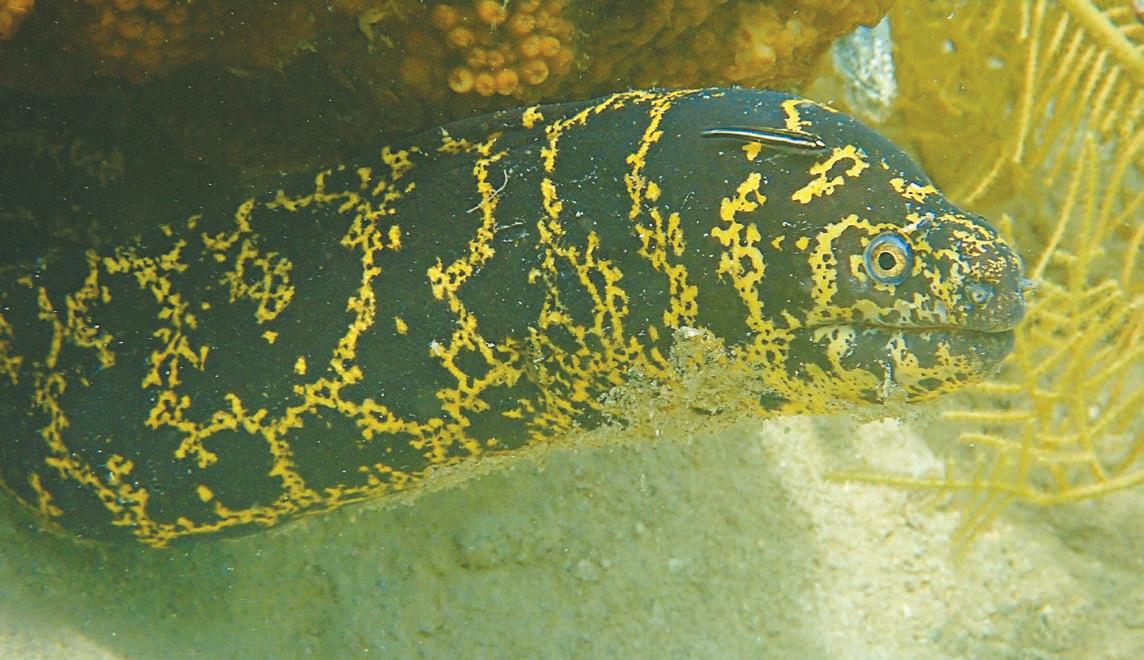
Where some camouflage, others use striking color patterns to warn others off; this is known as aposematic coloration. In most instances it serves as a warning signal to potential predators to indicate that the target fish is poisonous, venomous or just dangerous and unpleasant to eat. This usually


takes the form of patches or spots of red, yellow, orange, or white. A reef resident that uses its color pattern to signal its potential for aggressiveness and to be left alone is the chain moray eel (Echidna catenata). This beautiful eel can be recognized by its yellow, interconnected chainlike markings and yellow eyes. Others use flashes of bright colors to signal their irritation as a warning, such as the flying gurnard (Dactylopterus volitans). When threatened, this unique creature spreads its wing-like pectoral fins, revealing bright markings, probably to startle predators and send a visual warning that makes it appear toxic and larger than it really is. The most iconic example of aposematism in the Caribbean is the boldly patterned invasive lionfish (Pterois volitans) with its distinctive venomous spines. There is just no mistaking that this is not a creature to be messed with.
The amount of examples we can cite is vast. What is clear is that color pattern cues serve as indispensable tools in the survival strategies of reef fish. The role of color and pattern in the lives of reef fish is truly fascinating and cannot be addressed in one article; in Part Two we will look at the role color patterns play in mate selection and social interactions.


By Jim Ulik
“Exploration is in our nature. We began as wanderers, and we are wanderers still. We have lingered long enough on the shores of the cosmic ocean. We are ready at last to set sail for the stars.”
— Carl Sagan.
“Exploration is what you do when you don’t know what you’re doing. That’s what scientists do every day. If a scientist already knew what they were doing, they wouldn’t be discovering anything, because they already knew what they were doing.”
— Neil de Grasse Tyson.
Dutch astronomer, cartographer and Calvinist minister Petrus Plancius (1552 – 1622) requested the assistance of ship’s captains and navigators to acquire a catalog of stars in the areas between established constellations. To aid in the identification of these additional stars he created new constellations that navigators and explorers might accept. The catalog of new and established constellations was constructed onto a celestial globe. A few of the 22-star formations Plancius named are the Southern Cross, Dorado and Phoenix. The new cataloged stars in the southern hemisphere enhanced navigation along the trade routes to the Dutch East Indies combined with the numerous nautical charts he illustrated. Newly cataloged stars in the northern hemisphere were used as a navigational aid in establishing the Northeast Passage.
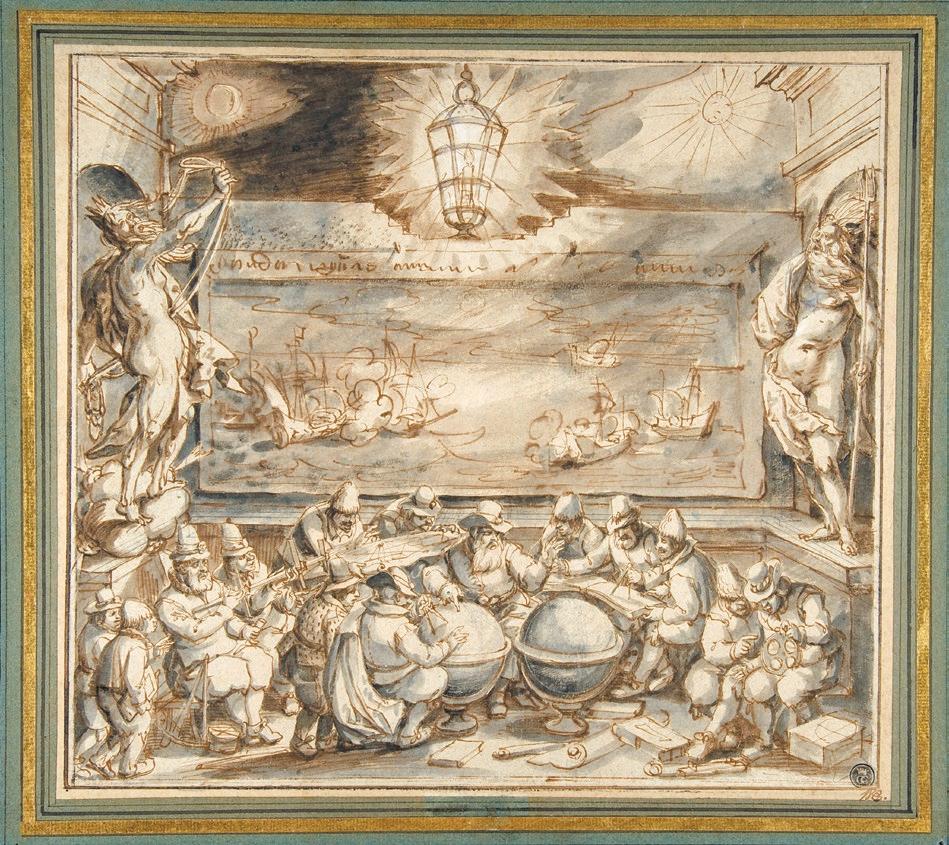
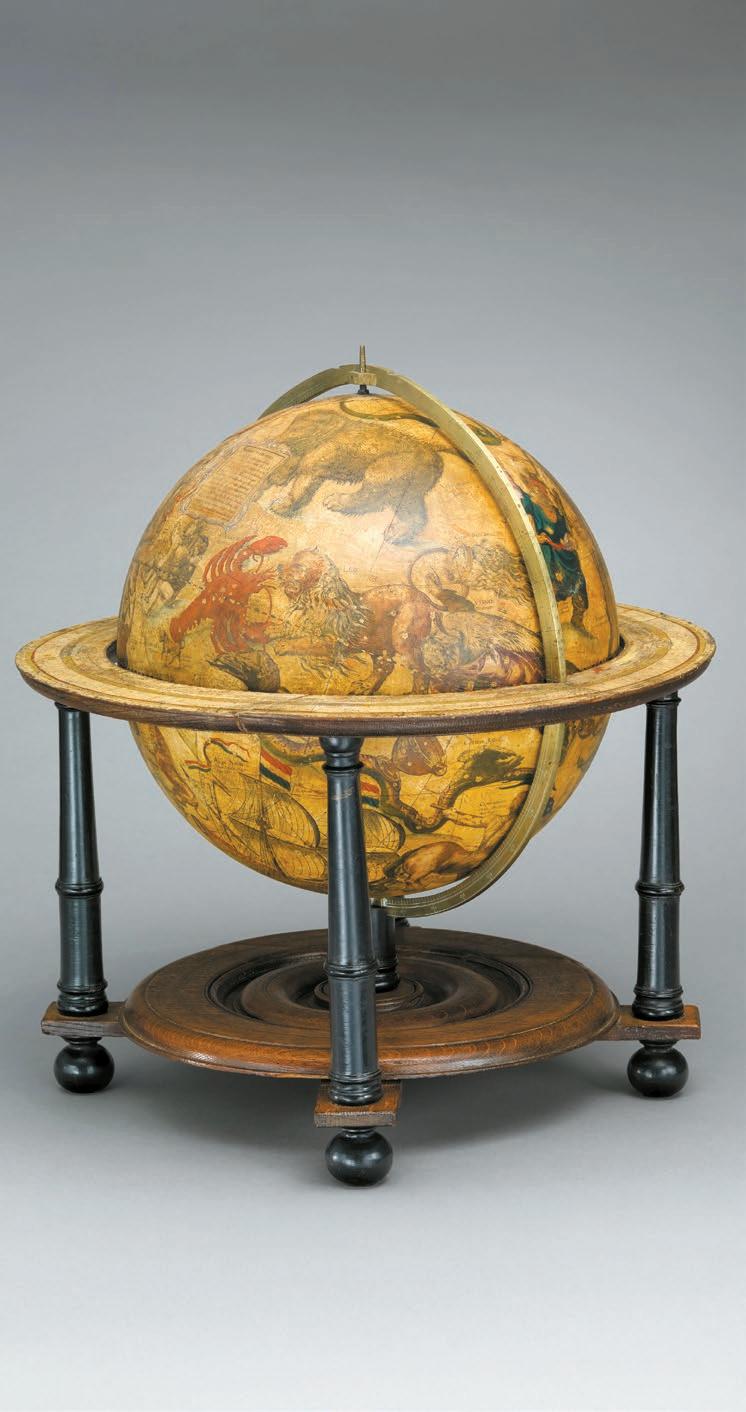
Friday, November 01
The Moon is hidden from view throughout the day. It is in line with the Sun and reaches the New Moon phase at 0847. The Moon also reached its farthest distance from Earth a couple of days ago so the Moon and Sun’s combined effect on the local tides will not be as pronounced.
The last of Comet C/2023 A3 (Tsuchinshan–ATLAS) can be seen for the next couple of days in the western sky after sunset. It will not return for another 80,000 years.
Sunday, November 03
The Moon has left the Sun behind and is returning to the night sky. The waxing crescent Moon resides above Mercury near Antares. Tomorrow night it will take up its monthly position near Venus.
Tuesday, November 05
Earth began passing through one of multiple dust streams left by comet 2P/Encke on September 08. It will continue through this broad debris field until December 08. Tonight’s peak rate of the Southern Taurids may only be 5 – 10 meteors per hour but, this shower has been known to produce some bright fireballs. A fireball is a large fragment meteor that burns brighter than Venus. Begin searching the sky after 1900h.
Saturday, November 09
The first quarter Moon occurs this morning on Carl Sagan Day, his 90th birthday anniversary. Carl Sagan was the most effective public advocate for the values of science.
Sunday, November 10
The Moon has shifted its position 15 degrees to
the east over the last 24 hours. Tonight it appears one degree right or west of Saturn in the constellation Aquarius.
Tuesday, November 12
Earth has now intersected another dust stream of comet 2P/Encke. This is the peak of the Northern Taurids meteor shower. This shower is active October 19 — December 9.
Friday, November 15
Tonight is the last of the three Supermoons in 2024. It reached its closest approach to Earth two nights ago but still appears very large as it rises around 1730h.
Saturday, November 16
Mercury reaches greatest eastern elongation of 22.5 degrees from the Sun. This is the best time to view Mercury since it will be at its highest point above the horizon in the evening sky. Look for the planet low in the western sky northwest of Venus just after sunset.
Saturday, November 16 – Sunday, November 17
Over the next two days the Moon will slide by Jupiter. On November 16 the Moon will be equally spaced between the Seven Sisters and Jupiter. When the Moon rises on November 17 it can be found slightly north and east of Jupiter.
Sunday, November 17
The Leonids is considered to be a major meteor shower even though it may only produce 5 - 20 meteors per hour. The Leonids are bright meteors that can appear blue, green or yellow.
Tuesday, November 19 –
Wednesday, November 20
The Moon is still on the move. November 19 it makes a close approach to the navigational star Pollux in Gemini. Pollux is 10 times larger than our Sun. It took 34 years for the star’s light to reach us. Tomorrow the Moon makes a close approach to Mars in the constellation Cancer.
Thursday, November 21
Before the Moon rises keep your eye out for meteors from the Alpha Monocerotids meteor shower. It remains to be seen but the amount of meteors could be anywhere from 5 - 400 meteors per hour. The shooting stars will radiate from the east near the unicorn constellation named Monoceros.
Friday, November 22
The Moon enters its Third Quarter just before rising in the northeast at 76 degrees. Close above the dark side of the Moon is the star Regulus. Meteors from the Leonids shower will be harder to see because its source is currently about seven degrees north of the Moon.
Wednesday, November 27
The last meteor shower this month is the November Orionids. The shooting stars arise out of the club of Orion but, it is best to look high overhead to find them zipping across the sky.
*All times are given as Atlantic Standard Time (AST) unless otherwise noted.
1 Public holiday in Antigua (Independence Day), including the Antigua and Barbuda Independence Food Fair
1 Public Holiday in several places (All Saints’ Day)
1 Start of Salty Dawg Fall Rally to the Caribbean from Hampton, VA www. saltydawgsailing.org
1-3 Cannabliss Festival, Arnos Vale Sports Facility, St. Vincent
3 Public holiday in Dominica (Independence Day)
4-10 Puerto Rico Queer Film Festival
5-10 St. Barts Gourmet Festival. saintbarthgourmetfestival.com
5-20 Habana Clasica Music Festival. cubagrouptour.com/us/information/ events-in-cuba
6-10 Barbados Open Water Festival. visitbarbados.org
7-10 Jamaica Food and Drink Festival
8-10 Budget Marine Round Grenada Regatta
8-11 USVI Charter Yacht Show. usviyachtshow.org
8-17 Pirate Week, Grand Cayman. Piratesfestcayman.com
10 ARC+ leaves Las Palmas de Gran Canaria for St Georges, Grenada.
10 Clean Coast Bonaire
11-17 St. Barts Rum Festival. caribbeanrumawards.com
11-22 Festival de la Gastronomie, Saint-Martin. festival-st-martin.com/en
13-17
St. Barth Cata Cup. www.stbarthcatacup.com
15 FULL MOON (Full Beaver Moon)
15-28 Feb Havana Biennial. cubagrouptour.com/us/information/events-in-cuba
16-17 Antigua & Barbuda Yachting & Marine Association Industry Showcase, Falmouth Harbor Marina. abyma.ag
19 Marabana Marathon, Cuba. cubagrouptour.com/us/information/ events-in-cuba
20-24 Havana Jo Jazz Festival. cubagrouptour.com/us/information/eventsn-cuba
22-23 Treasure Beach Food, Rum and Reggae Festival, Jamaica. foodrumreggaefestival.com/
22-24 Imagine Weekend, Barbados. visitbarbados.org
23-25 Jolly Harbour Yacht Club Annual Regatta, Antigua. jhycantigua.com
24 Classic ARC departs Las Palmas de Gran Canaria for Saint Lucia
29-1 Dec St. Maarten Budget Marine Optimist Championship. smyc.com
30 Public holiday in Barbados (Independence Day)
30 Nanny Cay Round Tortola Race, BVI. www.royalbviyc.org
30-1 Dec Anegada Lobster Festival, Anegada, BVI. bvicalendar.com
TBA Alliouagana Literary Festival, Montserrat
TBA Jammin’ J-22 International Regatta, Montego Bay, Jamaica
TBA Lights of Trinidad – start of Festival season
TBA Mango Bowl Regatta, St. Lucia. facebook.com/MangoBowl
See the entire calendar of events at caribbeancompass.com/caribbean-events-calendar

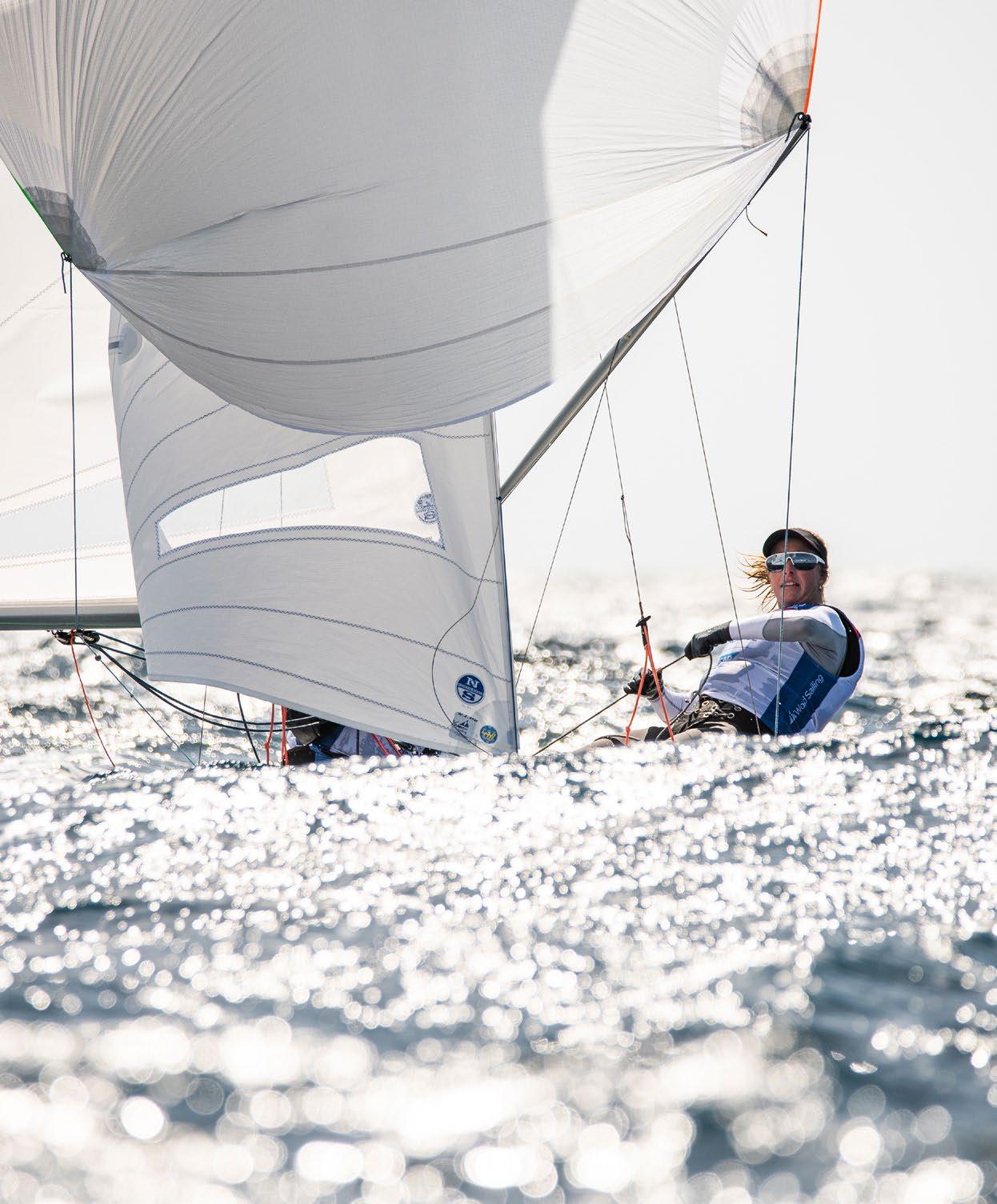
After sailing in regattas all over the world, one thing is clear – we need to do more to protect our

at

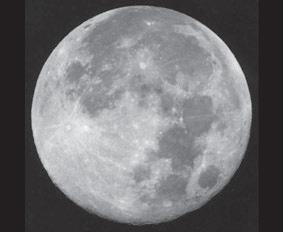
Crossing the channels between Eastern Caribbean islands, an ebb tide carries you off to leeward and a strong flood tide creates lumpy seas, so crossing with a favorable tide is faster and more comfortable. The table below, showing the local time of the meridian passage (or zenith) of the moon for this month, will help you calculate the tides.
Water generally tries to run toward the moon. The flood tide starts running eastward soon after moonrise, continues to run east until about an hour after the moon reaches its zenith (see TIME below) and then ebbs westward. From just after the moon’s setting to just after its nadir, the tide runs eastward; and from just after its nadir to soon after its rising, the tide runs westward.
The first hour after moonrise, the westerly current is barely negated. The second hour the flood tide is stronger, the third and fourth hour it’s strongest, then it eases off in the fifth and sixth hours. The maximum tide is three or four days after the new and full moons. For more detailed information enabling the sailor to calculate the direction and strength of the current, check the tidal section in the booklets that come with Imray-Iolaire charts A27 or B1.
Story by Bonnie Harrison and Simon Scott, photos courtesy Cruising Guide publications

Nothing has influenced the history of the Virgin Islands more profoundly than their geography and physical makeup. Situated at the high point of the curving archipelago that swings from Trinidad to Florida, they survey strategically all of the Americas, and with their steady northeast trade winds and numerous sheltered coves and harbors, continue to attract sailors from around the globe.

The British Virgin Islands, ideally situated in the turquoise waters of the Caribbean Sea, comprise four larger islands and 32 smaller islets and cays, some uninhabited. Tortola, Virgin Gorda, Jost Van Dyke and Anegada are the big four with Peter, Cooper, Norman and Marina Cay being some of the more well-known smaller islets and cays.
With the exception of Anegada, a flat coral island, between 10 and 15 feet above sea level and surrounded by dangerous reefs, the rest of this archipelago was created by magma rising to the surface and the subsequent volcanic eruptions that formed low mountains, foothills and lagoons. The exception is Sage Mountain, the highest point in the BVI, rising to 1,709 feet above sea level and home to the Sage Mountain National Park.

The BVI is a British Overseas Territory. The government is a parliamentary democracy elected and regulated by the Constitution of the British Virgin Islands. The BVI islanders, as they are called, are predominantly of African descent and stem from the plantation history of slavery in the BVI. To date, the demographic mix is about 75 percent black. The balance of the population is a mix consisting of a small community of Europeans, Americans and downislanders. The official language spoken is English. There are variations such as English based Creole. This is a rapid and idiomatic mix of English with an island rhythm.

The currency used in the British Virgin Islands is the US dollar. Major credit cards are accepted in most restaurants and shops. However, on smaller islands, you may run in to places that are cash only.
—Continued on next page

The BVI is accessible by air, or by ferry via the USVI. There are no direct flights from Europe or Canada but American Airlines operates a daily direct flight from Miami. If you are arriving by sea, there are ports of entry located in Road Town, Jost Van Dyke and St. Thomas Bay in Virgin Gorda. Customs & Immigration will require passports and boat registration. Daily ferry services connect all the major islands.
The airport at Beef Island was opened in 1968. The following year marked the opening of the first charter boat company, The Moorings, which has now grown to a global brand with bases throughout the world. Geographically, the cruising area offers some protection from the blustery trade winds while also providing numerous islands and anchorages for exploration, without the longer passages associated with the lower Caribbean.
As chartering became increasingly popular, the various islands began to open beach bars to cater to their new tourist demographic. Jost Van Dyke, three square miles, opened its first beach bar in 1968. We all know that as Foxy’s. The Soggy Dollar opened in 1972, and these two beach bars became iconic places for sailors to drink, eat and party. But the tradition of beach bars goes back to 1960 when a small hotel was built on Marina Cay. It was later leased by Pussers, who opened a restaurant and a gift shop there. Marina Cay, badly damaged by hurricane Irma, has since been revitalized and is open, barefoot vibe and all.
In 1969, the first real “sailors haunt” was built: the Bitter End, at North Sound, Virgin Gorda. Destroyed by Irma, but built back to the highest standards, it is still a don’t miss stop. Saba Rock, a hotel and restaurant that welcomes sailors with a dinghy dock alongside their restaurant, has also been revitalized. These establishments, along with the Oil Nut Bar Marina in Deep Bay, offer an exciting array of entertainment and activity for the cruiser and charterer alike.
1989 introduced a new way to dine, drink and party hard. This is the year that brought the Willy T, a large converted tanker, to the Bight at Norman Island. Stories abound about many wild nights of partying with the usual suspects jumping into the water below, with and without bathing attire!
Tortola and Virgin Gorda are the two municipal hubs of the BVI. Government house, the college, hotels, shops and marinas, as well as a large port where cruise ships dock make Tortola the main island of the group. Virgin Gorda became famous for the Baths, now a national park. For years, tourists have flocked to explore its giant boulders and hidden sea pools. Back when these islands were formed, enormous granite boulders (batholiths) were pushed to the surface by volcanic action. They are always an attraction for exploration, with steps and handrails to lead you through this labyrinth of rocks and pools. The latter paths were added around 1990.
Heavily influenced by the growth of the charter trade, the ecology of the BVI has suffered the effects of indiscriminate anchoring on coral beds over time and permanent moorings have been installed in many major anchorages and national parks. Moorings can cost between $40-$60 a night, and for the cruising sailor on a budget finding a spot to anchor in the more populated anchorages can be a challenge.
With sailing and the charter industry well established as the economic backbone of BVI tourism, sailors continue to make use of one of the finest sailing areas in the world. The quiet coves where Drake, Columbus and Blackbeard used to anchor are once more havens for fleets of sailing vessels and the modern adventurers who come to explore its waters.
Bonnie Harrison is the senior editor of Cruising Guide Publications. For more detailed information on the Virgin Islands and the sailing areas of the Caribbean, from the Virgin Islands south to Grenada, pick up a copy of the latest 2025 editions of the Cruising Guide Publications series or download the CruisingGuide app on Apple and Google. www.cruisingguides.com
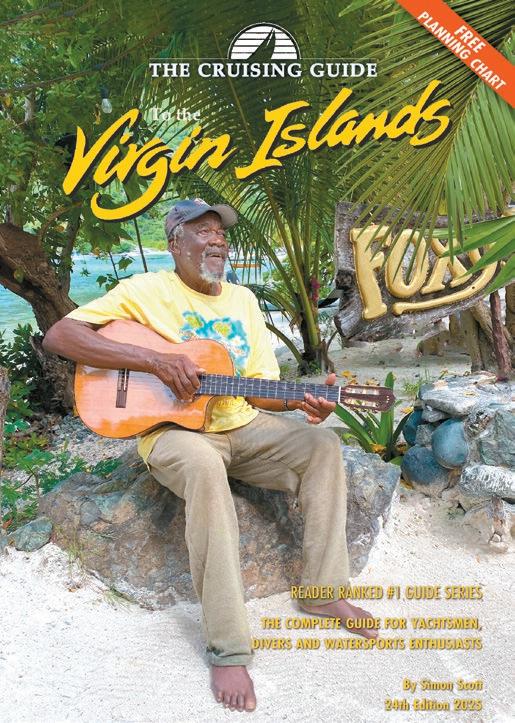
The new 2025 version of the Virgin Islands Cruising Guide is the 24th edition.
Ports of Entry:
There are four ports of entry for the BVI: two on Tortola, one on Jost van Dyke, and one on Virgin Gorda. West End/Soper’s Hole on Tortola is a popular entry/exit port for cruisers due to its proximity to the USVI. Spanish Town is the main harbor on Virgin Gorda and is the westernmost entry/exit port. See BVI Main Ports for more details on the ports of entry. https://www.noonsite.com/place/british-virgin-islands/#mainports
Advance Paperwork:
The BVI uses the SailClear system. Boats should pre-register and submit their arrival notification. For many countries, a visa is not required. Check the government website for more details. https://bvi. gov.vg/sites/default/files/visa_requirements_for_the_virgin_islands_ nationals_of_the_following_countries.pdf
Entry Process:
On arrival, the captain should immediately proceed to the nearest Customs and Immigration offices with the SailClear ID number, crew passports and boat paperwork. Reserved dress is recommended (no bathing suits/beachwear). BVI immigration authorities typically issue a one-month entry stamp on arrival.
Exit Process:
SailClear must be used for departure. Only the captain need go to Customs and Immigration to complete departure formalities (provide SailClear ID number).
Rates:
For a double handed yacht, entry and exit costs come to approximately USD $100. See a breakdown of fees on Noonsite. https:// www.noonsite.com/place/british-virgin-islands/view/fees/

This information is provided by Noonsite.com, specialists in worldwide formalities for yachts, and was accurate at the time of going to press. Check Noonsite’s BVI Formalities for more details and updates.
https://www.noonsite.com/place/british-virgin-islands/view/clearance
PT-9900-144 HORTA / FAIAL, AZORES
Providing all vital services to Trans-Atlantic Yachts!
Incl. Chandlery, Charts, Pilots, Rigging EU-VAT (16%) importation TEL +351 292 391616 mays@mail.telepac.pt www.midatlanticyachtservices.com


Check out our website or contact us directly for a competitive quote on rugged and well-built sails that are well suited to the harsh environment of the charter trade and blue water cruising.
Jeff Fisher – Grenada (473) 407 6355 www.neilprydesails.com

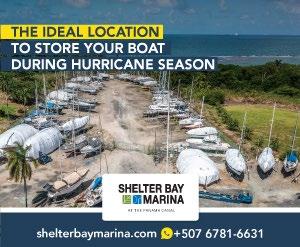

Successful marine business for sale based in St. Maarten Caribbean.
Please email dougieshipmate@gmail.com for more information







